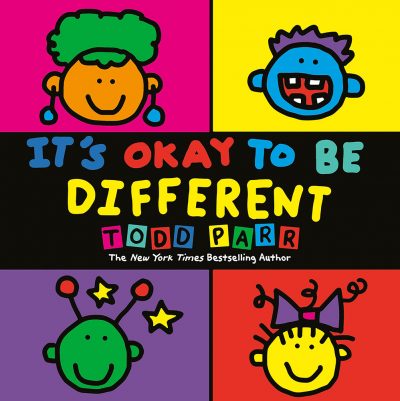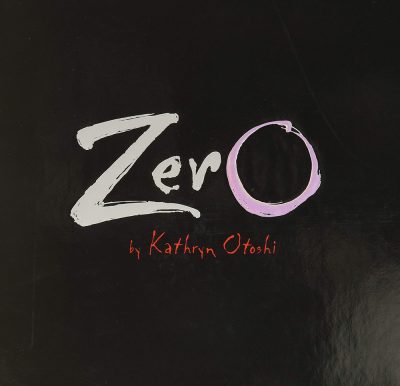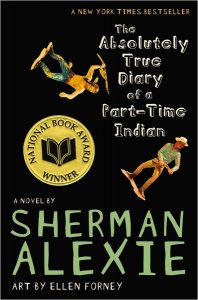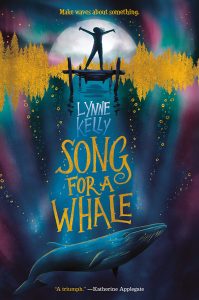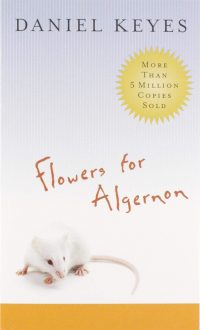The Inclusion Library is a hub for books for all ages about disability inclusion and awareness. Please peruse the virtual shelves and click on each book for more information including discussion prompts and suggested activities for your Unified readers. Schools can use their Centralized Accounts to purchase books.
Suggested reading level: Elementary school
A Boy and A Jaguar
 by Alan Rabinowitz
by Alan RabinowitzGrade K-3
Description
A Boy and A Jaguar is a book about a little boy who loves animals and has a difficult time communicating because of stuttering. Animals help him, because he sees them as misunderstood, just as he sees himself as misunderstood.
Discussion questions
- How do you think the author felt at school?
- Why do you think the author is passionate about speaking for jaguars?
- How can you use your voice to help others?
Classroom activities
- Listen to this story: “Man and Beast” by Alan Rabinowitz
- Think of ways to make sure that all students feel welcome in the classroom–that everyone matters and has a “voice.” As a class, write a pledge that describes how students will treat one another.
- Make a paper plate jaguar mask. Search Google for ideas and directions.

All My Stripes: A Story for Children With Autism
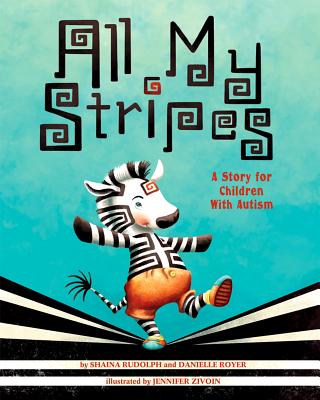 by Shaina Rudolph and Danielle Royer
by Shaina Rudolph and Danielle Royer
Grade K-3
Description
In All My Stripes, Zane worries that his “autistic stripe” is all that anyone sees. His mother points out that he is much more than that in a way that young children will understand.
Discussion questions
- Zane is a fictional cartoon character who has autism. Have you ever heard the word “autism” before? Encourage children to share any experiences or knowledge they have about this topic.
- What did Zane’s mother mean when she said “I see many different stripes?” What were some of Zane’s stripes? What are some of your stripes? Do we all have the same stripes?
- In what ways are you like Zane? In ways are you different?
- In the book, Zane wants to talk to his classmates but doesn’t know how. If you were Zane’s classmate, how would you include him in the conversation?
Classroom activities
- Work in small groups to create a different, more positive school day for Zane.
- Have each student draw a picture of their stripes. Working with a partner, identify things you have in common and ways you are different. Present these findings and your drawings to the class.
- Research autism and share your findings as a class.

All the Way to the Top: How One Girl’s Fight for Americans with Disabilities Changed Everything
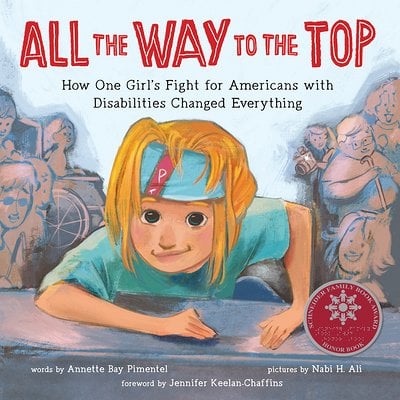 by Annette Bay Pimentel
by Annette Bay Pimentel
Grade K-4
Description
Experience the true story of lifelong activist Jennifer Keelan-Chaffins and her participation in the Capitol Crawl in this inspiring autobiographical picture book. This beautifully illustrated story includes a foreword from Jennifer and back matter detailing her life and the history of the disability rights movement.
Jennifer Keelan was determined to make a change, but the way the world around her was built made it hard to do even simple things like go to school or eat lunch in the cafeteria. When the Americans with Disabilities Act, a law that would make public spaces much more accessible to people with disabilities, was proposed to Congress, Jennifer went to the steps of the Capitol building in Washington DC to have her voice heard.
Discussion questions
- Before reading the book, discuss the words “include” and “exclude” with the class. What does it mean to be included? What does it mean to be excluded? How does it feel to be included? How does it feel to be excluded? Instruct students to keep these feelings in mind as you read the book.
- What does it mean to be an “activist?” Have any students or their families ever been part of a protest or campaigned to make a change in the world, big or small? How did it make them feel?
- Why does her neighborhood school say that Jennifer doesn’t belong there?
- Why does Jennifer decide to become an activist? How does taking part in a protest or demonstration make Jennifer feel?
- Why do Jennifer and her friends crawl up the Capitol steps?
- What is the Americans with Disabilities Act? What is the purpose of the ADA? How do Jennifer and her friends react to the passage of the ADA?
- Discuss the idea of “empathy” with students and why is it important to understand the way someone else is feeling. Go through the book as a class and discuss how Jennifer feels about the things that happen to her. If they were in a similar situation, would students feel the same emotions? Why or why not?
Classroom activities
- Watch parts or all of this video documenting the historic Capitol Crawl as a class. The Crawl starts at 5:50, and at 7:50 you can see Jennifer.
- As a class, discuss the role of the author and the role of the illustrator in creating a book. Break students into small groups, assigning each a two-page spread for closer examination. Work with students to explore the following questions: Where is their scene set? Who are the featured characters? What is happening? How do the illustrations work with the words to tell the story? Have each group present their ideas to the class.
- Thanks to the ADA, public spaces must take people with disabilities into consideration. For example, curb cuts allow wheelchairs to cross streets more easily. Ask students to identify the accommodations they see in their day-to-day lives. Can students think of other accommodations that could make life easier? Ask students to explore their neighborhoods and take photos of the accommodations they encounter and ideas to make things even more accessible. Come together as a class and share their discoveries.
- Jennifer is a confident child! When other students in kindergarten tell her, “You’ll never be one of us,” Jennifer knows they are wrong. She says that she thinks of herself as “just a friend waiting to happen!” What does this phrase mean? Adopt this phrase as the class motto while you are studying this book. How could this attitude change the way students see the world and other people?

The Black Book of Colors
Description
Living with the use of one’s eyes can make imagining blindness difficult, but this innovative title invites readers to imagine living without sight through remarkable illustrations done with raised lines and descriptions of colors based on imagery. Braille letters accompany the illustrations and a full Braille alphabet offers sighted readers help reading along with their fingers. This extraordinary title gives young readers the ability to experience the world in a new way.
Discussion questions
- How do you understand and describe colors if you have never seen them with your eyes?
- Discuss communication with students. As a class, list the different ways in which human beings can communicate with one another, e.g. speaking, nonverbal gestures, sign language, writing (emails, letters, text messages), signaling. How do students prefer to communicate? Face to face, via SMS? Why?
- The Black Book of Colors uses several different methods to communicate an idea to the reader. Ask students to identify these methods.
- Who was Louis Braille? Ask students to research Louis Braille and share their findings. Six Dots: A Story of Young Louis Braille is an excellent source. What did students find surprising or interesting about his life?
Classroom activities
- Create a class book of colors. Ask children to draw a picture of something that represents a color and write a sense that corresponds to their picture.
- Using the Braille alphabet from the book, or an online translator, have students write a short acrostic poem about their favorite color.
- Show students items such as print-Braille and large print books, Braille and large print rulers and tape measures, a Braillewriter or slate and stylus, a talking and large print calculator, a talking dictionary, a coloring screen, Braille and large print playing cards, a bell ball etc.
- Create your own tactile book ensuring that the materials used reflect how the item would really feel.
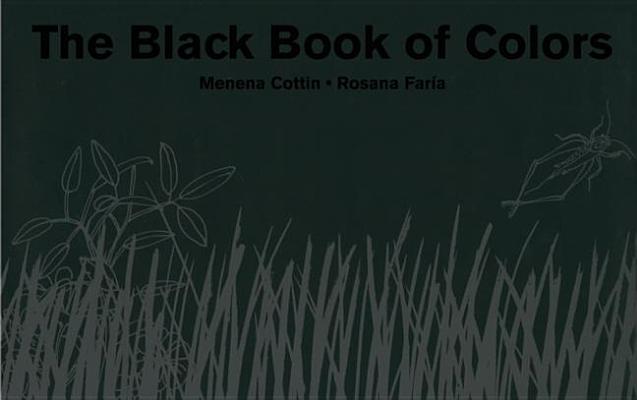
Can I Play Too?
Description
Piggy and Elephant are about to start a game of catch when their friend Snake asks, “Can I play, too?” Both are puzzled by the request because Snake has no arms. But the three friends try hard to find a way to include everyone in the game. After trying different solutions, poor Snake is about to give up, saying, “Well, I guess I can’t play after all.” This is a wonderful read-aloud book with very funny illustrations.
Discussion questions
- Why is Snake so sad? What do you think Elephant and Piggy can do? How can they solve the problem?
- Have you ever had to think of a new way to do something so that a friend could play with you?
Classroom activities
- Give each student a piece of paper folded into 4 squares. In each square, students write or draw:
- something they observed in the book,
- something they wondered about,
- a sensory description—smell, touch, etc.,
- how the story is like something they did or that happened to them.
Allow time for all to share if they choose.
- Let small groups of children act out parts of the book for the class.
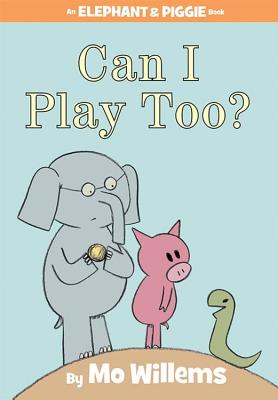
Emmanuel's Dream: The True Story of Emmanuel Ofosu Yeboah
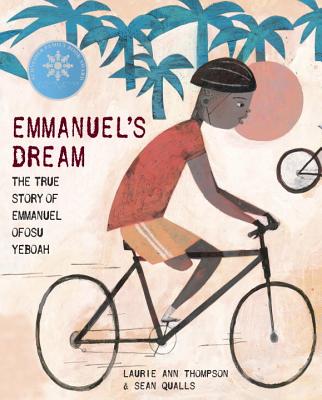 by Laurie Ann Thompson
by Laurie Ann Thompson
Grade K-3
Description
This is the true story of Emmanuel Yeboah. Born in Ghana in 1977 with a deformed leg, he became the personification of courage, strength—mental and physical—and determination even as a child. His life, challenges and accomplishments are well-known in Ghana.
Discussion questions
- What is Emmanuel’s message? How is he spreading his message? What do you think of Emmanuel’s method for spreading his message?
- How did Emmanuel overcome the prejudice and unfair treatment that he faced? How did he help other people with disabilities around the world? What do you think it would be like to ride a bike 400 miles? Do you think you could do it?
- Have people ever judged you or been mean to you just because you’re different than they are? How did that make you feel? How did you react? With a partner, brainstorm things you could have said or done to help them realize they were treating you unfairly. Have you ever been mean to someone different than you? Why do you think you acted that way? If you met that person again today, what would you do differently? Discuss with a partner.
Classroom activities
- Emmanuel wanted to show people that being disabled does not mean “unable.” Create a poster featuring Emmanuel’s message.
- Locate Ghana on a map or globe. What do students know about Ghana or West Africa? What can they tell about the climate or people based on the pictures in the book? Make a chart on the board showing what students already know or assume about Ghana. After reading, add a section to the chart showing what students learned about Ghana from the book.
- Emmanuel wears a special shirt while riding to raise awareness for his cause. Are any issues or causes important to you? On a sheet of paper, design a T-shirt that shares a message about something important to you. If you have a plain T-shirt and fabric markers, copy your design onto a shirt and wear it to spread the word about your cause!

The Girl Who Thought in Pictures: The Story of Temple Grandin
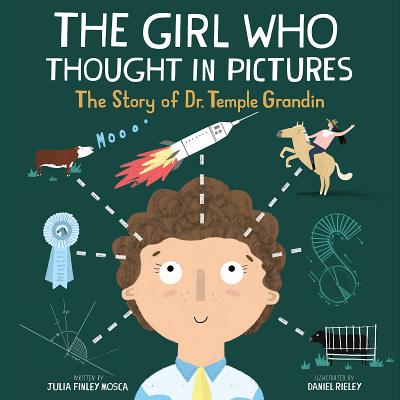 by Julia Finley Mosca
by Julia Finley Mosca
Grade K-5
Description
If you’ve ever felt different, if you’ve ever been low, if you don’t quite fit in, there’s a name you should know. Meet Dr. Temple Grandin. When young Temple was diagnosed with autism, no one expected her to talk, let alone become one of the most powerful voices in modern science. Yet the determined visual thinker did just that. Her unique mind allowed her to connect with animals in a special way, helping her invent groundbreaking improvements for farms around the globe.
Discussion questions
- How is young Temple like the other kids her age, and how is she different? How are the differences interpreted by different people in the story, i.e., doctors, teachers, her mother, kids at school, the animals on the ranch? Which thoughts and opinions are helpful and which ones are harmful?
- Temple was kicked out of school and sent to visit her aunt on a ranch. How did this time away impact the rest of Temple’s life?
- Temple had to deal with prejudice not only about autism, but also about her gender. How did she approach these obstacles?
- What are some character traits that describe Temple? Use this list as a starting point and add in other ideas.
- In a note to readers at the end of the book, Temple encourages everyone to find something they are good at and work on it. What are you good at?
- Did you make any personal connections with Temple’s story? Have you ever experienced anything like what she experienced or felt how she describes feeling in the book?
Classroom activities
- Many autistic people throughout history have used their unique and individual perspectives to impact the world through art, inventions, scientific breakthrough, and more. Break into small groups and research one autistic person’s life and accomplishments, then have each group share what they learned with the class.
- Watch this short video featuring Dr. Grandin on sensory processing and have a class discussion.

I Talk Like a River
Description
What if words got stuck in the back of your mouth whenever you tried to speak? What if they never came out the way you wanted them to? When a boy who stutters feels isolated, alone, and incapable of communicating in the way he’d like, it takes a kindly father and a walk by the river to help him find his voice. Poet Jordan Scott writes movingly in this powerful and uplifting book, based on his own experience. A book for anyone who feels lost, lonely, or unable to fit in.
Discussion questions
- Discuss the boy’s relationship with his father. How do the poet and the illustrator communicate this?
- Discuss the wordless centerfold. Explain how the boy’s facial expression conveys what he is feeling. Open the fold-out pages. What is significant about the glistening river? Is this a turning point for the boy? Compare this illustration to the one on the cover of the book.
- Sometimes the illustrator shows only the eyes of the boy, rather than his entire face. What is the boy seeing and feeling in the first double-page spread? Chart what the boy’s eyes reveal from the beginning of the book to the end. Look at the boy’s body language throughout the book. What does this say about the way he feels?
- Read the author’s note at the end as a class. The author feels very connected with the movements of nature and compares them to his own. What do you think about that? Do you feel connected with nature? Why or why not?
Classroom activities
- The text of this book is a poem. Explore poetry as a class using some of these fun classroom activities, or by creating your own.
- In the book, the boy finds comfort and confidence in nature. Create a book of nature inspired poetry as a class. Prepare by talking about nature, exploring nature in-person, or by looking at photos or illustrations of nature. Have each student write a poem and create a collage to illustrate their poem. Put all the poetry together into a class book of poems.
- Invite a local poet to class to talk about their work.
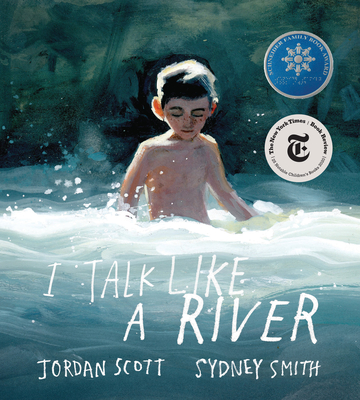
It's Okay to Ask
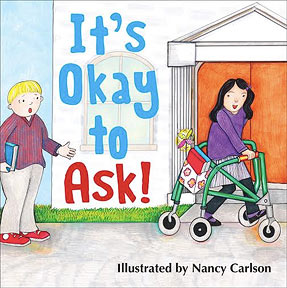 by Gillette Children’s Specialty Healthcare
by Gillette Children’s Specialty HealthcareGrade K-3
Description
Written by the experts at Gillette Children’s Specialty Healthcare and illustrated by beloved Twin Cities artist Nancy Carlson, It’s Okay to Ask! introduces five children who have disabilities or complex medical conditions. They love to read, play, tell jokes, and make friends. As you get to know the characters in the book and learn that it’s okay to ask questions, you will discover that everyone is more alike than you might think and that people of all abilities can be friends.
Discussion questions
- Before reading:
- Read the title of the book and look at the cover. What do you see on the cover? Who are the people pictured? What are they doing? What do you think this book might be about?
- Talk about friendship. What does it mean to be a friend? What do you like to do with your friends?
- Introduce the story. Have you ever been curious about people and asked them questions? In this book you will meet five new friends and some kids who are curious about them.
- While reading:
- Make predictions. When you meet each friend, a child asks a question. Before turning the page, ask, “What do you think will happen next? What will the friends do? Where will they go? Will they be friends?” Turn the page and read to find out. What happened? Did you guess correctly? If not, what surprised you?
- Notice similarities and differences. How are you the same as the kids in the book? Do you also like to dance, ride bikes, read? What else? How are you different? For example: Do you spin on your toes while Maya spins on her wheels? Do you ride a two-wheeled bike while Carter rides a three-wheeled bike?
- After reading:
- Discover what tools help us. Kids use all kinds of tools to help them do things. Maya uses a wheelchair to dance, and Ahmed uses a tablet to talk. What kind of tools help you? Do you use a stool to reach high places? Do you wear glasses to help you see?
- Learn about making friends. Pretend some of the kids in the book moved into your neighborhood and you want to be friends with them. What would you want to do with them? How would you invite them to play? What would you say?
Classroom activities
- Read the book like a play.
- Play “I spy” in the park scene. Find and name the five friends, find the butterfly, the dog, and so on.
- Describe the emotions expressed by each child. Think of a time you felt like that and draw a picture of that feeling.

It's Okay to Be Different
Description
This book delivers a feel-good, positive message about acceptance and understanding. The brightly colored simple pictures and repetitive text work together to call attention to superficial differences and encourage readers to focus on acceptance and individuality. The child-friendly format feature’s Todd Parr’s trademark bold, bright colors and silly illustrations. This book is a great way to start the conversation about diversity with young students.
Discussion questions
- Before reading the book with the class, introduce the idea of differences/similarities by asking the group to respond to several of the following statements: Stand up if you have freckles/red hair/have lost a tooth/are wearing sneakers, etc. Then ask the children to think of other ways we are different from each other and ways are we alike.
- Read the book, stopping to ask if anyone knows someone who is like a given character. Which, if any, characters are like you?
- Look at the last page of the book. It reads: “It’s OK to be different. You are special and important just because of being who you are.” Share one thing about yourself that you think makes you special and important.
Classroom activities
- Print out and color these coloring sheets as a class.
- Make a T chart: What makes us different/What makes us the same. Brainstorm until there are several examples on each side of the chart. Save this for the next activity.
- Review the book and the chart. Write the sentence model “It’s okay to ____” on the board. Tell the class that each student will use that model to create at least 1 page of a class It’s Okay book. Encourage students to illustrate their pages using the bright, bold colors of the book. Allow all to share their work, then compile the pages into a class book.
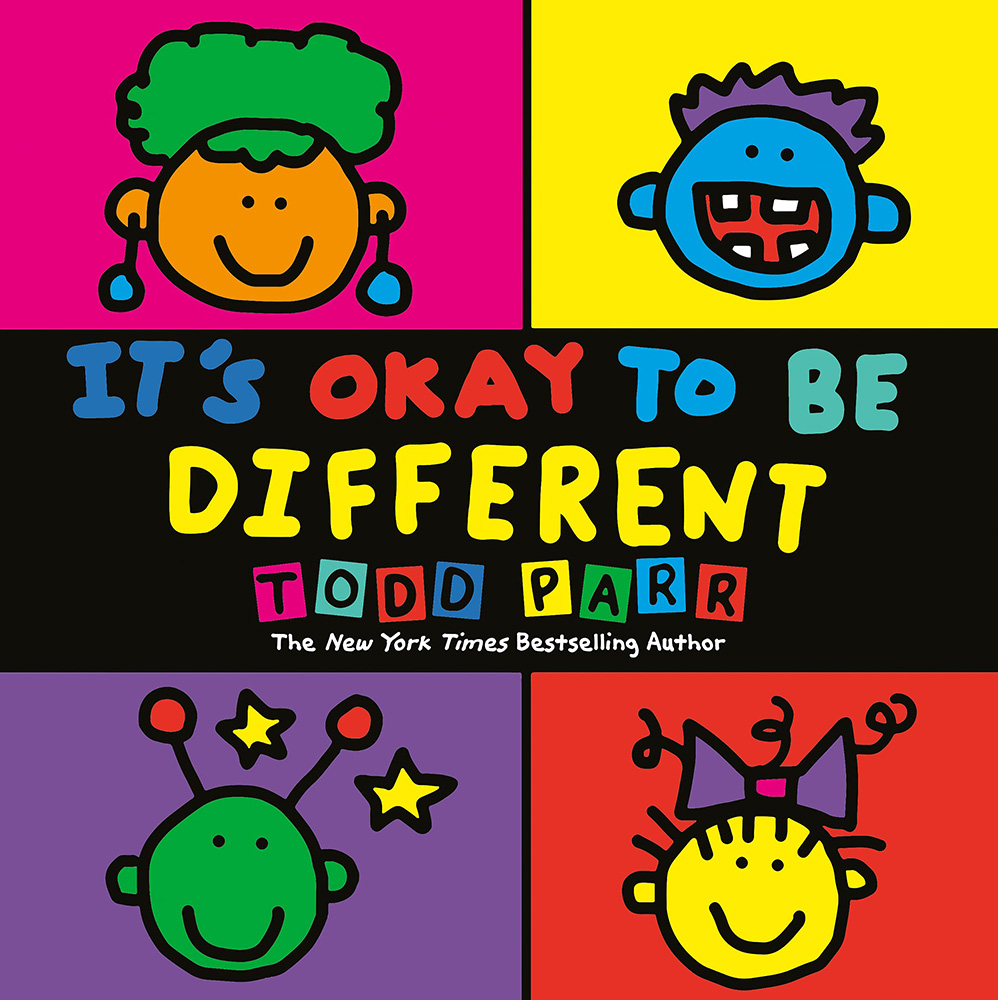
Itzhak: A Boy Who Loved the Violin
Description
Before becoming one of the greatest violinists of all time, Itzhak Perlman was simply a boy who loved music. Raised by a poor immigrant family in a tiny Tel Aviv apartment, baby Itzhak was transformed by the sounds from his family’s kitchen radio. The rich melodies and vibrant rhythms spoke to him like magic, filling his mind with vivid rainbows of color. After surviving polio and begging his parents for a real instrument, Itzhak threw his heart and soul into playing the violin. Through dedication, perseverance, and hard work, Itzak honed his extraordinary gift. When he performed on the Ed Sullivan Show at only 13, audiences around the world were mesmerized by the warmth, joy, and passion in every note.
Discussion questions
- Itzak shows a lot of perseverance. What does it mean to persevere?
- Do you think his love of music helped Itzak recover after having polio?
- What changes do Itzak’s parents make to support him in the book?
- What were some obstacles to Itzak becoming a professional violinist? What were some of his solutions?
- Itzak feels a lot of different emotions when he hears music. What are some of the feelings he had in the book? What are some of the feelings you have had while listening to music? Combine this question with the listening activity below.
Classroom activities
- Watch this video from Sesame Street on Easy and Hard with Itzak Perlman.
- Watch this video from Itzak’s first performance on the Ed Sullivan Show in the US.
- Itzak sees colors when he hears music. This is called synesthesia. Watch this video and this video as a class to learn more. Be sure to use the 360 option in the second video for full effect.
- Listen to different classical music excerpts as a class and talk about how the music makes you feel.

Just Ask!: Be Different, Be Brave, Be You
Description
Supreme Court Justice Sonia Sotomayor and award-winning artist Rafael Lopez create a kind and caring book about the differences that make each of us unique. Feeling different, especially as a kid, can be tough. But in the same way that different types of plants and flowers make a garden more beautiful and enjoyable, different types of people make our world more vibrant and wonderful.
Discussion questions
- Why does the author call the book Just Ask!
- Why do you think the author wrote this book? What do you think she wants you to learn from her book?
- How might asking questions help us understand each other? Is it ever hard to ask questions?
- Which child in the book are you most like and why?
Classroom activities
- Learn about Justice Sotomayor. Share your research in small groups or with the class.
- Watch this interview with the author
- Listen to this interview with the author and illustrator
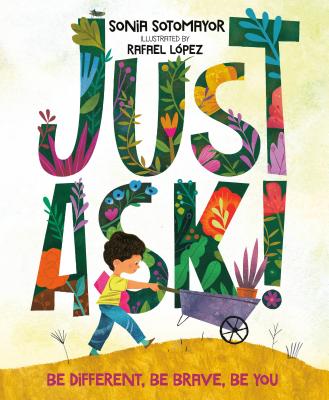
My Brother Charlie
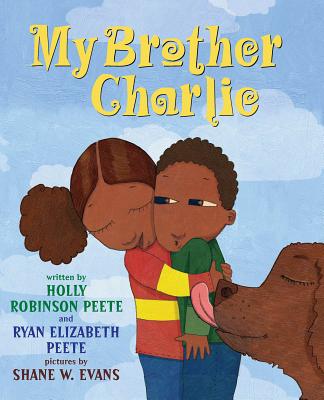 by Holly Robinson Peete and Ryan Elizabeth Peete
by Holly Robinson Peete and Ryan Elizabeth Peete
Grade 2-5
Description
My Brother Charlie is inspired by a true story. It is a book about a boy with autism, as told through the eyes of his twin sister. This book helps us recognize that we are all unique, with our own strengths and weaknesses.
Discussion questions
- This story is told by Callie, a little girl whose twin brother has something called autism. Have you ever heard the word “autism” before? Charlie and Callie are pretend characters, but the book was inspired by a real family and was written by the sister and mother of a boy who is like Charlie. Encourage children to share any experiences or knowledge they have about this topic.
- What do Callie and Charlie have in common? How are they different?
- What are some things that Charlie is good at?
- Lead class discussion on working and playing with people who are different from us. Ask students to brainstorm different ideas on how to do this. Some ideas to get them started: look for things you have in common (things you both like, things you don’t like, where you live), ask them to play, show them something, ask an adult how you can help them, be patient, smile at them, etc. Brainstorm ideas on why it’s important to work and play with people who are different from us. Ask how you feel when you are included.
Classroom activities
- Draw a picture of family member or friends doing something they are good at. Pair up and share your drawings with a partner.
- Using a large sheet of paper, or the board, have each student draw one thing Charlie is good at.

Not So Different: What You Really Want to Ask About Having a Disability
Description
Shane Burcaw was born with a rare disease called spinal muscular atrophy, which hinders his muscles’ growth. As a result, his body hasn’t grown bigger and stronger as he’s gotten older; it’s gotten smaller and weaker instead. This hasn’t stopped him from doing the things he enjoys (like eating pizza and playing sports and video games) with the people he loves, but it does mean that he routinely relies on his friends and family for help with everything from brushing his teeth to rolling over in bed.
Not So Different offers a humorous, relatable, and refreshingly honest glimpse into Shane Burcaw’s life. Shane tackles many of the mundane and quirky questions that he’s often asked about living with a disability and shows readers that he’s just as approachable, friendly, and funny as anyone else.
Discussion questions
- What things do you have in common with Shane?
- What are some of Shane’s strengths?
- How does Shane use humor to tell his story and educate others? What do you think about this approach? What part of the book was the funniest to you?
- If you could ask Shane any question, what would it be?
Classroom activities
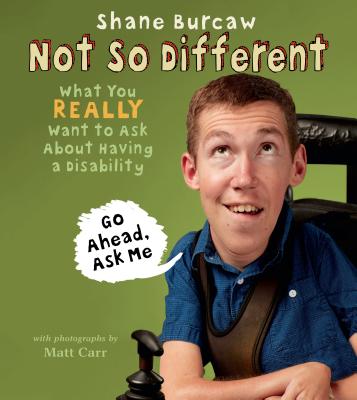
The Remember Balloons
Description
This tender, sensitive picture book gently explains the memory loss associated with aging and diseases such as Alzheimer’s.
Discussion questions
- In the book, the grandfather shares his memories with James. James becomes the keeper of those memories when his grandfather can’t remember them anymore. Whose memories would you like to have told to you? How might you collect and keep memories of others?
- What do you know about memory loss or Alzheimer’s Disease? Do you know anyone who has a difficult time remembering?
- What’s your favorite memory? Does anyone share this memory with you?
Classroom activities
- Ask students to interview and collect memories from elders in their family or community. Have students share their best found memories. Using pictures, words, or recordings make a collection of memories.
- Watch the read aloud video of the book
- Draw your favorite “balloon.” Choose a color for your balloon that connects to the memory. Share it with someone who has this same memory.
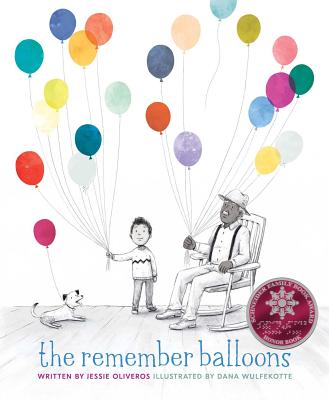
Say Something!
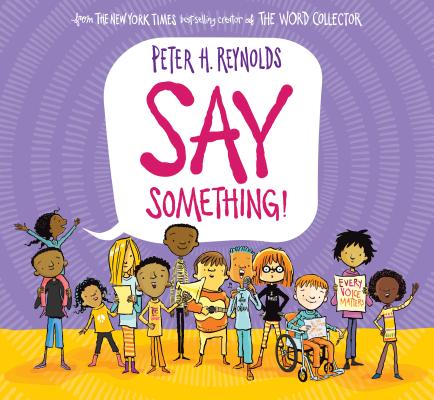 by Peter H. Reynolds
by Peter H. ReynoldsGrade K-3
Description
From the creator of The New York Times bestseller The Word Collector comes an empowering story about finding your voice, and using it to make the world a better place. The world needs your voice. If you have a brilliant idea…say something! If you see an injustice…say something!
In this empowering new picture book, beloved author Peter H. Reynolds explores the many ways that a single voice can make a difference. Each of us, each and every day, have the chance to say something: with our actions, our words, and our voices. Perfect for kid activists everywhere, this timely story reminds readers of the undeniable importance and power of their voice. There are so many ways to tell the world who you are…what you’re thinking…and what you believe. And how you’ll make it better.
The time is now: SAY SOMETHING!
Discussion questions
- Injustice means when things are not fair. Have you seen injustice? How did you feel?
- Name all the ways you can think of that we can use our voices.
- If you see that someone is lonely, what can you do? If you see someone is being hurt, what can you do?
Classroom activities
- Have students work in small groups to write a short script for a public service announcement that they would like to share with the world.
- What is their message for others? What do they feel hopeful about? What would they like to see change in their classroom, in their school, or in the world?
- After students have written their scripts, support them as they create an audio or video recording to share with the school community or with their families.
- Help students to work together throughout the process to ensure that all voices are heard. This process introduces critical ways that students can use multimedia to say something to the world.
- Research kids who changed the world. Draw students’ attention to the book dedication to Emma Gonzalez, a youth activist using her voice to raise awareness to an issue she cares about.
- Research the ways kids have historically used their voices to create change by learning about Kid Blink and the newsies movement, Clara Lemlich and the shirtwaist makers’ strike, Sylvia Mendez and Claudette Colvin and the fight for school desegregation, and marchers like Audrey Faye Hendricks, as well as countless others.
- Have students work in small groups to learn about a kid who said something to change the world. Have groups present what they found by “saying something” in any way they choose to the class.

Six Dots: A Story of Young Louis Braille
Description
Six Dots is a picture-book biography of Louis Braille, a blind boy so determined to read that he invented his own alphabet.
Discussion questions
- Have you ever faced an unexpected challenge where you have had to struggle and persist in order to succeed?
- Why is it important to be a reader? How does reading affect your knowledge of the world around you—and beyond? Can reading help you understand other people? How? Do you consider reading to be a joyful experience? Why or why not? Express your thinking in some way: an illustration, a poem, a graphic organizer, a paragraph. Share your thinking with a partner or in a small group.
- Examine the back matter (Author’s Note, Q and A, additional resources) included in Jen Bryant’s book. What was most helpful in deepening your understanding of Louis Braille’s life? Explain your thinking.
- Were you surprised by Louis’ age when he invented Braille? What other things have kids invented?
Classroom activities
- Pass around examples of books written in Braille, or the Braille alphabet. Resource: https://www.nbp.org/
- Using the Braille alphabet or an online translator have students write their names in Braille.
- Write an acrostic poem in Braille inspired by the story.
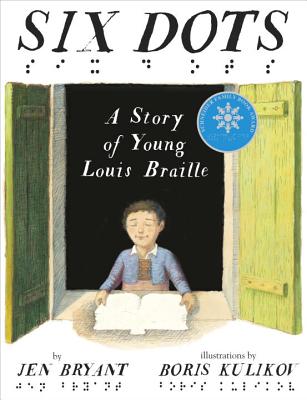
Zero
Description
Zero is a big round number. When she looks at herself, she just sees a hole right in her center. Every day she watches the other numbers line up to count: 1, 2, 3, 4, 5, 6, 7… Those numbers have value. That’s why they count, she thinks. But how could a number worth nothing become something?
Zero feels empty inside. She watches One having fun with the other numbers. One has bold strokes and squared corners. Zero is big and round with no corners at all. If I were like One, then I could count too, she thinks. So she pushes and pulls, stretches and straightens, forces and flattens herself, but in the end she realizes that she can only be Zero.
As budding young readers learn about numbers and counting, they are also introduced to accepting different body types, developing social skills and character, and learning what it means to find value in yourself and in others.
Discussion questions
- What does it mean to have value?
- Why did Zero only see an empty hole inside?
- How did Seven help Zero find her value?
- Have you ever felt like you didn’t matter? What made you feel that way?
- Think of a time when you felt valuable—to friends or to family. How did you feel then?
Classroom activities
- Whole group: Using chart paper or white board, brainstorm a list of words from the book that have more than one meaning (count, value, hole, stretch, open, soar).
- Prepare paper with a large zero covering most of the page. Ask students to draw a picture of the time they felt really valuable, cut it out and glue it into the center to the zero. Share your picture and story with your classmates.
- Prepare ahead of time: Cut out large “coins” from construction paper. Write something valuable about each person on their coin, e.g., kind, helpful, understanding, friendly, etc. Give each child their coin. Ask the class to discuss how it feels to know that someone values something about them.
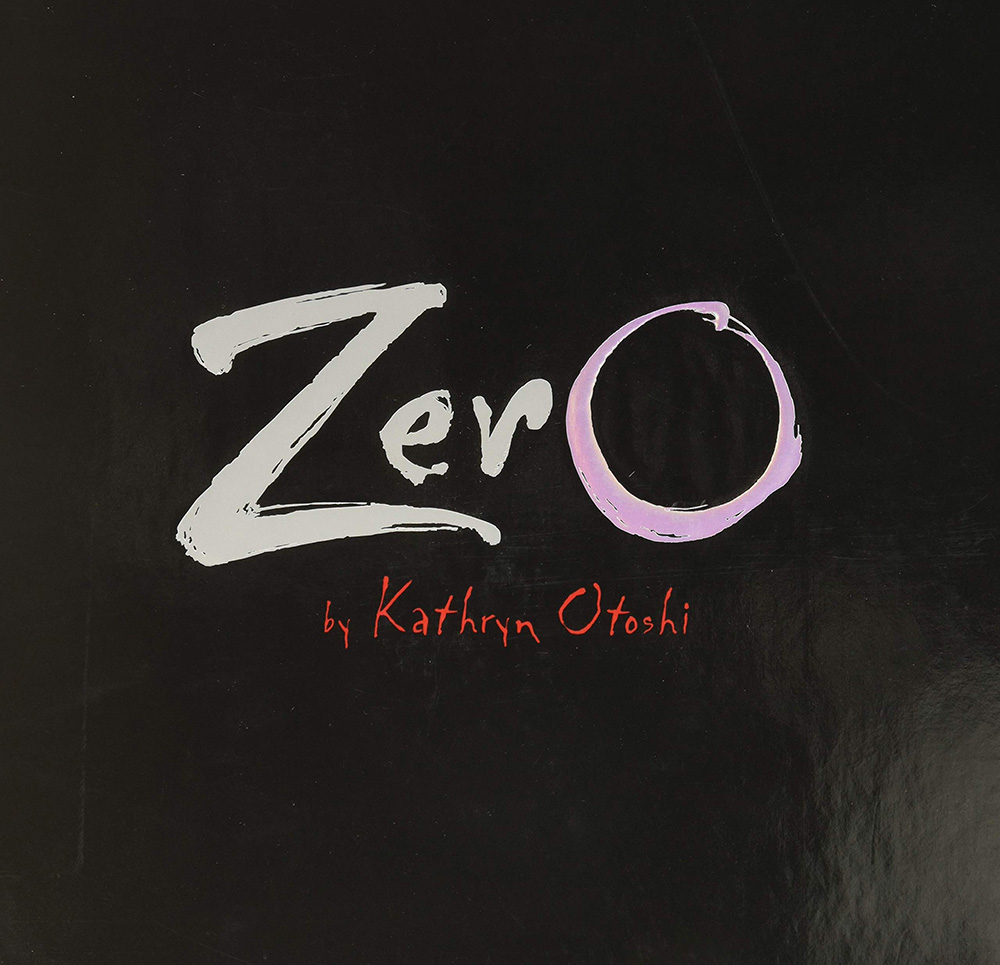
Suggested reading level: Middle school
The Absolutely True Diary of a Part-Time Indian
Description
Bestselling author Sherman Alexie tells the story of Junior, a budding cartoonist growing up on the Spokane Indian Reservation. Determined to take his future into his own hands, Junior leaves his troubled school on the rez to attend an all-white farm town high school where the only other Indian is the school mascot. Heartbreaking, funny, and beautifully written, The Absolutely True Diary of a Part-Time Indian is based on the author’s own experiences. Coupled with poignant drawings by Ellen Forney, it chronicles the contemporary adolescence of one Native American boy as he attempts to break away from the life he was destined to live.
NOTE: Please take a minute to look over this list of resources to decide if this book is a good fit for your school given recent allegations of abuse and misconduct.
Discussion questions
- The book starts off with humor, a central theme in the storytelling, and in the story laughter is often an expression of grief. How does Alexie use humor as well as sarcasm, especially when facing trauma and pain? What do you think of that? Is using humor in this way a part of your cultural upbringing? Read this article as a class and discuss further.
- Arnold talks about his brain as magic. What you do think he means? How does this compare to views on disability in your community? In what other ways does disability show up in the book? This guide has some resources for disability readings of literature that may help inform this discussion.
- Junior describes himself as having a head “so big that little Indian skulls orbited around it.” He also has a stutter, a lisp, is susceptible to seizures, wears “ugly, thick, plastic” glasses and is skinny with huge hands and feet. Due to these traits, people call Junior the r-word, and he is beaten up at least once a month. Why do people tease and bully those who look different? Would Junior be bullied or teased in your school? Why or why not?
- What do you think about Arnold’s comment, “I think the world is a series of broken dams and floods, and my cartoons are tiny little lifeboats”? What did you think of Ellen Forney’s illustrations? How did they impact your reading of the book?
- Reflect on Arnold’s experience at IHS. He says the dentists believe Indians only feel half the pain. What do you think of this statement? How are his experiences different or similar to your own?
- Self-expression through drawing comics is a big part of who Arnold is. How do you express yourself? Do you like to write or draw, dance or sing, etc.?
- How are Junior’s experiences at Wellpinit and Reardan High Schools in The Absolutely True Diary of a Part-Time Indian representative of the real world?
- Use this guide for further exploration as a class before and after reading the book.
Classroom activities
- Ask students to listen to the report about the Red Lake Warriors basketball team. Then ask them to create a newspaper article or deliver a live report after Rearden vs. Wellpinit’s first basketball game. Finally, have them create one for the rematch.
- Write a series of diary entries from Rowdy’s point of view after Junior leaves Wellpenit High. Try to capture Rowdy’s voice and emotions.
- Choose three cartoons from the novel and write a sustained analysis of each one. Consider: What can we see? What does it reveal about Junior? How does it complement the written text?
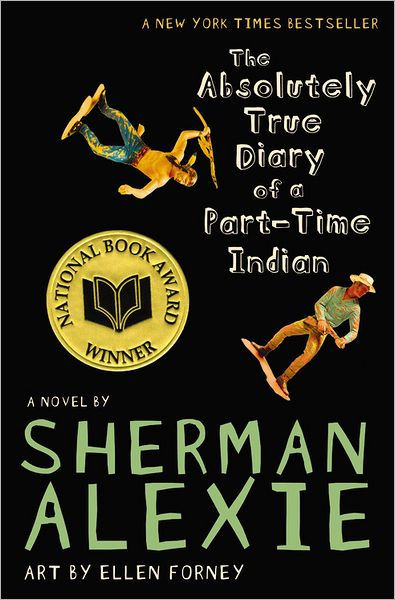
Charlie and Frog (series)
Description
All Charlie Tickler wants is for his parents to listen, but Charlie’s parents have left him with his TV-obsessed grandparents while they travel to South Africa to help giant golden moles. Lonely and curious, Charlie heads into the village of Castle-on-the-Hudson, where a frightened old woman gives him a desperate message—in sign language. When she suddenly disappears, Charlie is determined to find answers.
All Francine (aka Frog) Castle wants is to be the world’s greatest detective. Frog, who is deaf, would rather be solving crimes than working at the Flying Hands Café. When Charlie Tickler walks into the café looking for help, Frog jumps at the chance to tackle a real-life case.
Together, Charlie and Frog set out to decipher a series of clues and uncover the truth behind the missing woman’s mysterious message. Charlie needs to learn American Sign Language (ASL) fast to keep up with quick-witted Frog. And Frog needs to gather her detective know-how to break the case before it’s too late. Discover the surprising ways people listen in this page-turning mystery filled with humor, intrigue, and heartwarming friendships.
Discussion questions
- Did you know any ASL before reading the book? What signs did you learn in the book? Which ones were your favorites?
- What did you learn about deaf culture from this book?
- Define communication. In what ways did characters in this story communicate? Were there any difficulties or obstacles in communication, and how were they overcome? What traits did the characters have that helped them persevere?
Classroom activities
- Research fingerspelling and practice spelling your name. This video is one way to learn. Then research names in the deaf community and explore how names are signed. Watch this video on name signs for a good starting point.
- Research videos of interpreters for speeches, concerts, etc. Work together as a class to learn how to sign a favorite poem or song. Practice and give a performance.
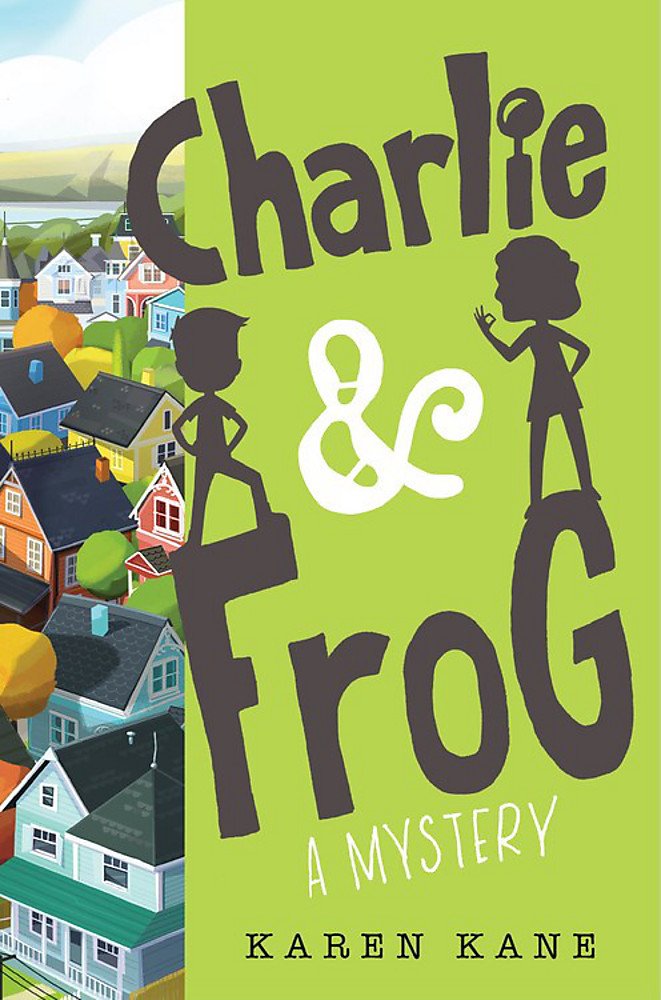
Chuck Close: Up Close
 Jan Greenberg & Sandra Jordan
Jan Greenberg & Sandra Jordan
Grade 4-6
Description
This 48-page picture book tells the story of Chuck Close’s life as an artist and his struggles, from overcoming learning disabilities as a child to fighting paralysis as an adult. Close’s monumental portraits, interpreted from photographs to reveal the fragments and wholeness of personality, are featured in collections around the world.
Discussion questions
- Chuck Close has a learning disability. What is a learning disability? What is the difference between being a visual learner and an audio learner? What are some other ways we learn?
- What type of obstacles did Chuck Close face in his life? How have those obstacles shaped his life and his artwork?
- How has Chuck Close been resilient in his life, and how could you apply his example to your own life?
Classroom activities
- Using this guide, have students create their own works of art in the style of Close.
- Watch this interview with Chuck Close and writer Christopher Finch.
- How does Chuck describe the ways his disabilities have impacted his art?
- According to Close, there were more opportunities to participate in the arts when he was in school. Do you think the arts are important?
- Watch this artist profile about Chuck Close.
- Close only paints people he knows. Why does he do this and what do you think of that choice?
- Close says, “If you wait around waiting to be inspired you may never make anything.” What do you think of this statement? How might this point of view be influenced by Close’s experiences in life?
- Watch this note to self from Chuck Close.
- Imagine yourself in 30 or 40 years. What would you tell yourself today? Write a note to yourself like Close did.
- Who are your helpers and mentors? Who makes you feel special? What does Close say about the importance of those people in our lives?
- Close lost his father at a very young age. How did this impact him?

Confessions of a Former Bully
Description
After Katie gets caught teasing a schoolmate, she’s told to meet with Mrs. Petrowski, the school counselor, so she can make right her wrong and learn to be a better friend. Bothered at first, it doesn’t take long before Katie realizes that bullying has hurt not only the people around her, but her, too. Told from the unusual point of view of the bullier rather than the bullied, Confessions of a Former Bully provides kids with real life tools they can use to identify and stop relational aggression.
Discussion questions
- Why did Katie write a book about bullying?
- Did your impression of Katie change throughout the book? How so?
- What were the ways in which Katie bullied her friends and others? Have you seen bullying like that in our classroom or school?
- What are the roles of bullying? What roles have you participated in? How might people in each role feel when the bullying is taking place? Are people always in the same roles? Can you be a bully one day and a target the next? Why? Why might people take on these different roles?
- In thinking about Mrs. Petrowski’s “Totally Awesome Empower Tools,” which of the eight tools do you think would work for you? Which ones would not work? How so?
Classroom activities
- Create a KWL chart. There are several sections in Katie’s book where she provides factual information about bullying. Ask students what they already know about bullying. Record that information on your chart. Ask students what they want to know about bullying and what questions they have about bullying and cyberbullying. Record that information on your chart. Have students do a research project. They can use StopBullying.gov or one of the organizations in the “Recommended Resources” section in the back of the book. Students can work in small groups on specific research projects. After the research projects are completed, students can create PowerPoint presentations and share with the rest of the class. Record that information on your chart.
- Have students reflect on the characteristics of trusted adults who students can talk to about bullying. Make a list of these characteristics. Share the lists with the adults in your school.
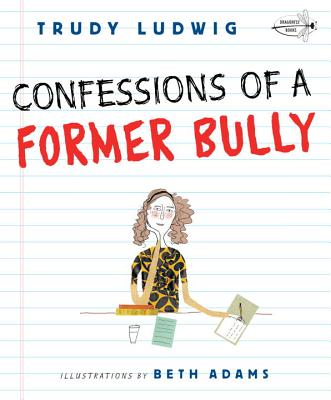
Each Tiny Spark
Description
Emilia Torres has a wandering mind. It’s hard for her to follow along at school, and sometimes she forgets to do what her mom or abuela asks. But she remembers what matters: a time when her family was whole and home made sense. When Dad returns from deployment, Emilia expects that her life will get back to normal. Instead, it unravels. Dad shuts himself in the back stall of their family’s auto shop to work on an old car. Emilia peeks in on him daily, mesmerized by his welder. One day, Dad calls Emilia over. Then, he teaches her how to weld. And over time, flickers of her old dad reappear. Each tiny spark is a tender story about asking big questions and being brave enough to reckon with the answers.
Discussion questions
- What is representation, and why is it important? What communities, identities, etc. are represented in Each Tiny Spark?
- In this interview, author Pablo Cartaya said, “Emilia’s life exists in multitudes; her experiences and challenges guide who she is and who she is becoming.” What do you think of this statement and the way the author tells Emilia’s story? What are Emilia’s challenges? What are her strengths?
- Why do you think many students in Emilia’s class don’t know about the history of Park View and Merryville?
- When Emilia discovers that the Olympic stadium was built by immigrants who then risked deportation, she wonders about the fate of her family members who are immigrants. She thinks, “Who makes the rules about who gets to stay somewhere and who has to leave?” This is a big question. Should someone have the power to dictate where another lives? If they stay or go?
Classroom activities
- Emilia and Gus’s video makes a big impact on their school, and Mr. Richt even hopes to share it with the community. In keeping with this moment in the text, make a video, like Emilia and Gus, about something going on at your school. The videos should include interviews and other footage relevant to the topic.
- So many of Pablo Cartaya’s books seek to understand familial connections, but they also highlight the families that we make for ourselves that often transcend biological relations. Keeping this in mind, create family trees (biological and/or chosen), doing research on your family archives to construct relations and see connections. These projects should be creative and should be accompanied by a brief, reflective writing where you explain your creative processes.
- Read and discuss this interview with author Pablo Cartaya. What did you find most interesting? What did you think about his reasons for writing the book, and his reasons for how he chose to represent Emilia’s journey?
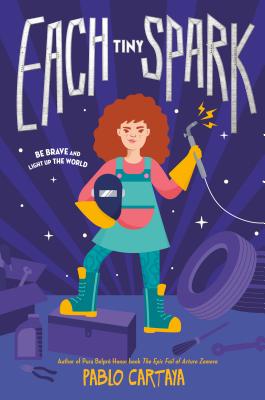
El Deafo
Description
In this funny, poignant graphic novel memoir, author/illustrator Cece Bell chronicles her hearing loss at a young age and her subsequent experiences with the Phonic Ear, a very powerful—and very awkward—hearing aid.
Discussion questions
- Discuss in what ways Cece’s childhood is like yours? How is it different?
- Do you think the portrayals of the main characters in El Deafo are believable or not? Why or why not?
- What is a memoir, and what are your thoughts on a memoir that is also a graphic novel?
- On pages 96-98, why doesn’t Cece tell the kids what’s bothering her about the sleepover? Why does she just decide to leave, instead? Discuss situations when students might be uncomfortable relating their feelings and why.
- Why might authors use animals to represent people? Why do you think that Bell selected rabbits to represent people in her story? Is there a symbolism in Bell’s use of rabbits?
Classroom activities
- Watch this interview with author Cece Bell
- Have students research and discuss different types of hearing loss and how they’re treated today. How is today’s treatment different from the treatment in the 1970’s? How is it different from the 1870’s? How might it be different in the future?
- Have students define culture. Conduct an online inquiry into the subject of the deaf culture. Using your results, create a slide show that could be used to educate staff in your school about this issue.
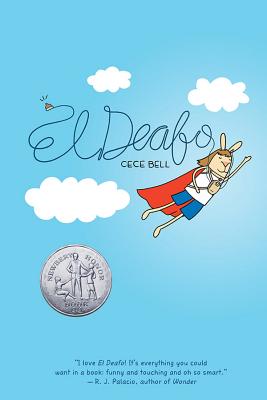
Fish in a Tree
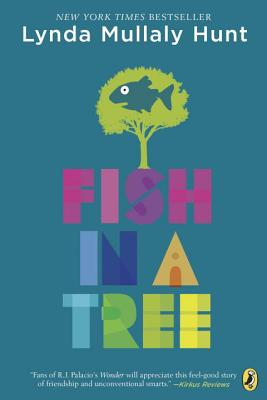 by Lynda Mullaly Hunt
by Lynda Mullaly Hunt
Grade 5-8
Description
Ally has been smart enough to fool a lot of smart people. Every time she lands in a new school, she is able to hide her inability to read by creating clever yet disruptive distractions. She is afraid to ask for help; after all, how can you cure dumb? However, her newest teacher Mr. Daniels sees the bright, creative kid underneath the trouble maker. With his help, Ally learns not to be so hard on herself and that dyslexia is nothing to be ashamed of. As her confidence grows, Ally feels free to be herself and the world starts opening up with possibilities. She discovers that there’s a lot more to her—and to everyone—than a label, and that great minds don’t always think alike.
Discussion questions
- When might someone feel as if he or she is a fish in a tree? Have you ever felt this way?
- At the beginning of the story, we learn that school is painful for Ally and that she doesn’t feel as if she fits in with her peers. When thinking about her class, she says, “Maybe they think I can’t hear their words: Freak. Dumb. Loser.” (page 3) Discuss the effect of these word choices.
- On page 11, Ally says, “I wish I had my Sketchbook of Impossible Things. It’s the only thing that makes me feel like I’m not a waste of space.” Why does Ally feel like a “waste of space?” How could you make her feel like she is important?
- How do Mrs. Hall and Mr. Daniels set the tone for respect in the classroom? How do they treat Ally? How does Ally respond to the way they treat her?
- How does the friendship bond among Ally, Albert, and Keisha inspire each of them to believe in themselves?
Classroom activities
- Experience what it may be like to have dyslexia
- Write a letter of advice to Mr. Daniels or Ally’s mom about how best to help Ally.
- Ask students to begin a word collection list in which they collect powerful words or phrases that describe the way Ally sees herself and the way others perceive her.

I am Not a Label
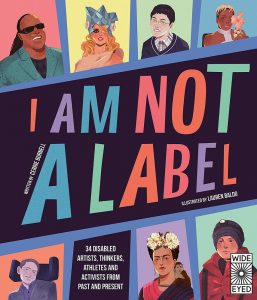 by Cerrie Burnell, illustrated by Lauren Baldo
by Cerrie Burnell, illustrated by Lauren Baldo
Grade 1-7
Description
In this stylishly illustrated anthology of short biographies, meet 34 artists, thinkers, athletes and activists with disabilities, from past and present. From Frida Kahlo to Stephen Hawking, find out how these iconic figures paved the way for others by making their bodies and minds work for them, becoming trailblazers, innovators, advocates, and makers.
Challenge your preconceptions of disability and mental health with the eye-opening stories of these remarkable people.
Discussion questions
- Which biography was your favorite, and why?
- Were there any biographies that surprised you? If yes, which ones, and in what ways?
- One of the author’s goals in writing this book was to challenge ideas about mental health and disability. Do you think they were successful with this goal?
- Can you think of other people who you would have included in this book if you were the author?
Classroom activities
- Read this interview with author Cerrie Burness aloud as a class, then have a short discussion about it. What stood out most to you from the interview?
- Break into small groups and work together to research an individual with a disability. Write a short biography about their life. Bonus art activity: Create a portrait of them using any medium to go with your biography.
- Break into small groups and spend time looking at the illustrations together. Think about why the author chose to have illustrations of each person in the book and the impact of the illustrations on readers. Pick 1-3 illustrations and discuss. What details do you notice in the illustrations? What do they tell you about the individuals represented? What details would be included in an illustration of you? Bonus art activity: Create a portrait of yourself inspired by the illustrations in the book using any medium.
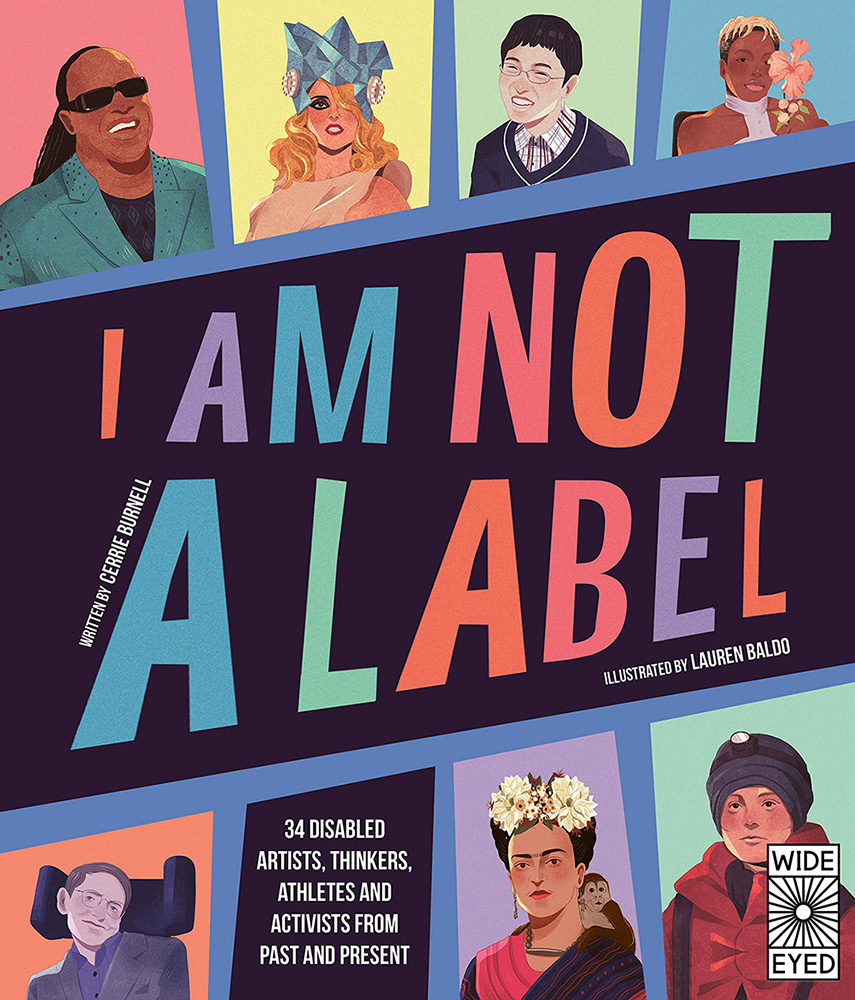
The Truth As Told By Mason Buttle
Description
Mason Buttle is the biggest, sweatiest kid in his grade, and everyone knows he can barely read or write. Mason’s learning disabilities are compounded by grief. Fifteen months ago, Mason’s best friend, Benny Kilmartin, turned up dead in the Buttle family’s orchard.
An investigation drags on, and Mason, honest as the day is long, can’t understand why Lieutenant Baird won’t believe the story Mason has told about that day.
Both Mason and his new friend, tiny Calvin Chumsky, are relentlessly bullied by the other boys in their neighborhood, so they create an underground haven for themselves. When Calvin goes missing, Mason finds himself in trouble again. He’s desperate to figure out what happened to Calvin and, eventually, Benny.
But will anyone believe him?
Discussion questions
- In chapter one, you learn that Mason has difficulty with spelling: “I can see the letters. But for me they go ugly. The fade or swell up. They slide away. If my eyes had pinchers on them. I’d grab at the letters and hold them still.” Mason is describing dyslexia, a disorder that involves difficulty in learning to read or interpret words, letters, and other symbols. Dyslexia is not an indicator of intelligence, but because of his learning disability Mason does not consider himself to be smart. What does he mean when he reveals, “I have been with my brain for twelve long years?” (page 2) As you read the story, discuss scenes in which Mason’s intelligence is evident. How does Mason slowly come to realize that he is a smart person?
- Mason and other students like to visit the school social worker’s office, known as the SWOOF. Discuss the character of Ms. Blinny. How does she make the SWOOF a safe haven for Mason and the other kids? How does she help Mason believe in himself? Discuss the significance of Ms. Blinny changing the message on Mason’s T-shirt from STOOPID to Thinks Outside the Box. How does this act help Mason salvage his integrity after being humiliated by Matt Drinker? Ms. Blinny says, “Your shirt makes a statement and asks a question. It is a curiosity!” (page 10) What is a curiosity? Discuss examples throughout the text where curiosity appears. How is curiosity a theme of the story?
- The story is told in the first person present tense. Why do you think the author chose to tell her story this way? How does Mason’s way of speaking and forming sentences help you get to know how he thinks, and how he struggles with language?
- On page 308, Uncle Drum tells Mason, “People are just looking for one kindness.” Discuss kindness as a theme in the story. Cite examples from the text. How did kindness prevail? The final sentence in the text is: “Knowing what you love is smart.” Discuss what Mason means by this statement.
Classroom activities
- Essay: On page 314, Andy Kilmartin says, “I forgot who you are, Mason.” After reading the text, challenge each student to write a short essay entitled, “Who Is Mason Buttle?” Encourage students to describe Mason as a person, his strengths and weaknesses, and how he changed over the course of the story. Students should include examples from the text to support their ideas.
- Design and make T-shirts: When Ms. Blinny sees Mason’s T-shirt with the word STOOPID written on it, she covers the derogatory word with duct tape and uses a Sharpie to draw a picture of a box and the words: “Thinks Outside the…” Have students brainstorm mottoes about thinking. Examples might include: “Think Positively” or “Think with an Open Mind.” Have students bring in a plain T-shirt. Provide fabric paints (or duct tape and Sharpies) to create a personalized “Think Shirt.”
- Story of you: When Mason is first introduced to the voice-recognition program that helps him write, he is amazed. For the first time in his life he is writing without the struggle caused by dyslexia. Ms. Blinny tells him, “It’s the story of you. You can use it to dump all the stuff that’s on your mind.” Have students begin a “Story of You” project as they read the text. (For students with language-based learning disabilities, work with the school special education teacher to acquire VR software.)
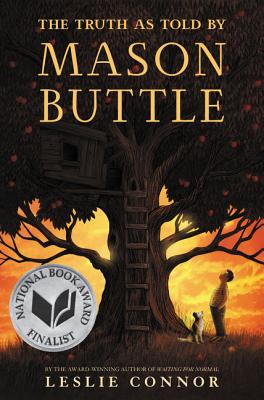
Out of My Mind
Description
Eleven-year-old Melody is not like most people. She can’t walk. She can’t talk. She can’t write. All because she has cerebral palsy. But she also has a photographic memory: She can remember every detail of everything she has ever experienced. She’s the smartest kid in her whole school, but no one knows it. Most people—her teachers, her doctors, her classmates—dismiss her as mentally challenged because she can’t tell them otherwise. But Melody refuses to be defined by her disability. And she’s determined to let everyone know it…somehow.
Discussion questions
- How does Melody feel about school? How does she fit in with her classmates, and what makes her different from the rest of the children in H-5? What would be Melody’s ideal school situation?
- How does the inclusion program change Melody’s school experiences, both positively and negatively?
- What does Melody learn about friendship during the trip to the aquarium? Make a comparison between Ollie’s life, the life of the fish in the aquarium, and Melody’s life.
- Discuss the scene in which Melody confronts the kids on the quiz team. What is satisfying about how she handles the situation? What else might Melody have done?
- Why is the first page repeated at the end of the book? How has Melody changed, both personally and socially, from the beginning of the book to the end?
Classroom activities
- Write “cerebral palsy” on chart paper. Students can research what it means and share their thoughts on the chart.
- Research current laws for inclusion of children with disabilities into classrooms. What effect, if any, do such things have on a school community?
- You are a reporter at one of the following scenes. Write the story for your newspaper.
- Student with disabilities makes quiz team
- Child struck by family car
- Big storm grounds air traffic
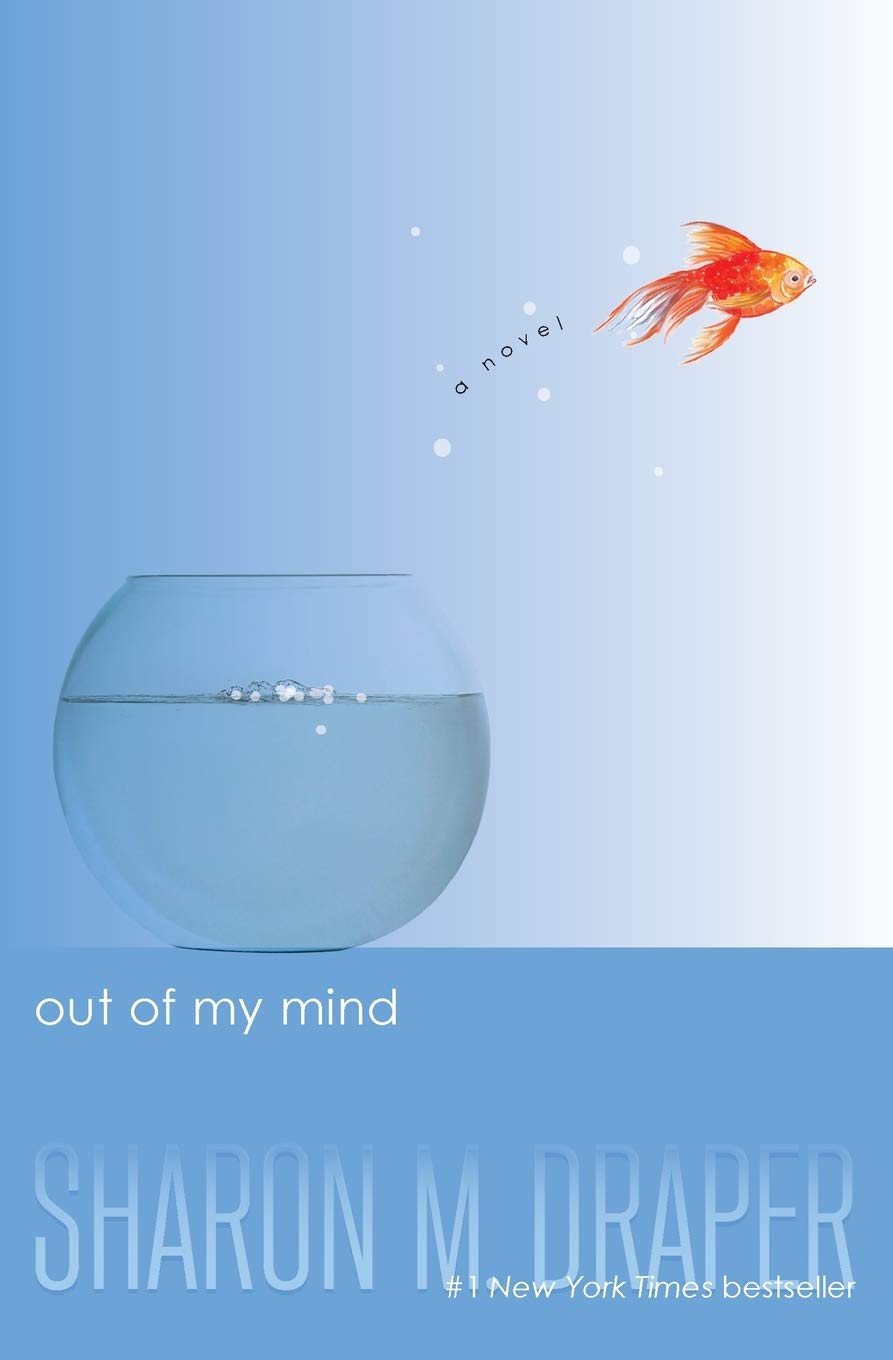
Rain Reign
Description
Rose Howard is obsessed with homonyms. She’s thrilled that her own name is a homonym, and she purposely gave her dog Rain a name with two homonyms (Reign and Rein), which, according to Rose’s rules of homonyms, is very special. Not everyone understands Rose’s obsessions, her rules, and the other things that make her different—not her teachers, not other kids, and not her single father. When a storm hits their rural town, rivers overflow, the roads are flooded, and Rain goes missing. Rose’s father shouldn’t have let Rain out. Now Rose has to find her dog, even if it means leaving her routines and safe places to search.
Discussion questions
- Everyone is different; every person has particular habits and interests. Some people have differences that others see as “disabilities.” What makes Rose different? Are her outbursts in class something she does on purpose?
- If Rose was a student in your class, how would you react? What are some things Rose’s teacher and classmates could do to help?
- Rose has a diagnosis of autism. How does this disorder affect the way she thinks and acts and her relationships with other people?
- How does Rose’s relationship with her classmates change throughout the story? What causes this change?
Classroom activities
- Write another chapter for the book. What would Rose be doing? What lies ahead for Rose? Do you think she will ever see Rain again?
- Invite someone with Asperger’s to speak to your class on their experiences.
- Who in your class has a “prime number name?” Use Rose’s strategy to find out!
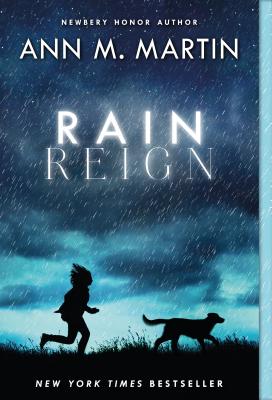
Rules
Description
Rules is a heartfelt and witty debut about feeling different and finding acceptance—beyond the rules. Twelve-year-old Catherine just wants a normal life. Which is near impossible when you have a brother with autism and a family that revolves around his disability. She’s spent years trying to teach David the rules—from “a peach is not a funny-looking apple” to “keep your pants on in public”—in order to stop his embarrassing behaviors. But the summer Catherine meets Jason, a paraplegic boy, and Kristi, the next-door friend she’s always wished for, it’s her own shocking behavior that turns everything upside down and forces her to ask: What is normal?
Discussion questions
- Describe Catherine’s relationship with David.
- How are Catherine’s rules good for David? How do her rules hold him back? How do Catherine’s rules hold her back?
- When Kristi has David dance in Catherine’s room, is she being mean? Since he wasn’t upset by it, should Catherine have stopped the music?
- If Catherine were to write a rule at the very end of the book, what do you think it would be?
Classroom activities
- What is autism? Have the students do research to help them understand what autism is.
- Draw your own word cards for Jason for “gross,” “awesome” and “stinks a big one!!!” What other word cards would you draw for Jason?
- If you could create a set of rules for your sibling, what would those rules be? Some examples might be related to borrowing your things or how to act when you have a friend visiting.
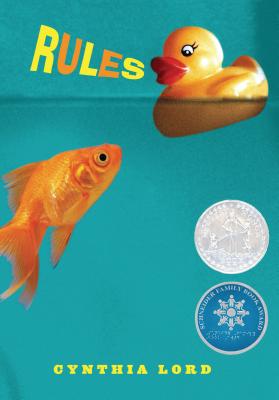
Silent Days, Silent Dreams
Description
James Castle was born two months premature on September 25, 1899, on a farm in Garden Valley, Idaho. He was deaf, mute, autistic, and probably dyslexic. He didn’t walk until he was four; he would never learn to speak, write, read, or use sign language.
Yet today Castle’s artwork hangs in major museums throughout the world. The Philadelphia Museum of Art opened “James Castle: A Retrospective” in 2008. The 2013 Venice Biennale included eleven works by Castle in the feature exhibition, “The Encyclopedic Palace.” And his reputation continues to grow.
Caldecott Medal winner Allen Say, author of the acclaimed memoir Drawing from Memory, takes readers through an imagined look at Castle’s childhood, allows them to experience his emergence as an artist despite the overwhelming difficulties he faced, and ultimately reveals the triumphs that he would go on to achieve.
Discussion questions
- What do you think Castle is feeling at various points in the book? i.e., when he is denied tools to make his art, when his art is taken or destroyed, when he has his first art show, when he gets his RV. How did you feel reading about his life? How might you feel in those situations? Have you ever been in a situation where you felt something similar?
- The book says that Castle could neither write or use sign language. Why do you think that is? How would that affect his ability to communicate? How else might someone who is deaf communicate?
- Look at the illustrations in the book. How do you think they were made?
- Have students define culture, then conduct an online inquiry into the subject of the deaf culture. Consider that many people who are hearing impaired are part of a strong community. Some people don’t consider deafness a disability and don’t believe in getting treatments such as cochlear implants to restore hearing. They believe they are better off staying the way they are, and that changing their bodies in order to hear devalues the importance of their differences and their community. What do you think?
Classroom activities
- Research Castle’s art online or through books about his art. What do you notice? What do you like about it? What don’t you like about it? How does it make you feel? How does it compare with art that is more photo-like? Share your findings and feelings with the class.
- Make art from scavenged materials. Castle used a mixture of spit and charcoal for many of his drawings because he did not have art supplies. If you didn’t have access to or money for traditional art supplies, what free materials could you use to make art? Gather materials and make a piece of art. Share your art and how you made it with your class.
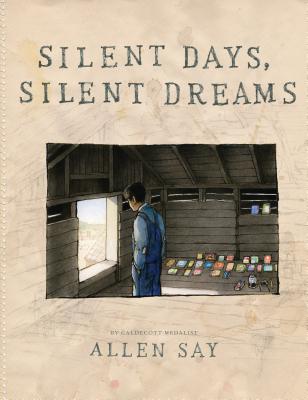
Song for a Whale
Description
In the spirit of modern-day classics like Fish in a Tree and Counting by 7s comes the Schneider Family Book Award-winning story of a deaf girl’s connection to a whale whose song can’t be heard by his species, and the journey she takes to help him.
From fixing the class computer to repairing old radios, twelve-year-old Iris is a tech genius. But she’s the only deaf person in her school, so people often treat her like she’s not very smart. If you’ve ever felt like no one was listening to you, then you know how hard that can be.
When she learns about Blue 55, a real whale who is unable to speak to other whales, Iris understands how he must feel. Then she has an idea: she should invent a way to sing to him—but he’s three thousand miles away. How will she play her song for him?
Full of heart and poignancy, this affecting story by sign language interpreter Lynne Kelly shows how a little determination can make big waves.
Discussion questions
- Before reading the book, read the author’s note at the end of the book as a class, and then listen to recordings of whale songs here and here.
- Iris is the only deaf person in her school. In what ways is she included and in what ways is she excluded at school?
- Iris loves building and fixing radios, and when she learns about Blue 55, she immediately wants to know everything about him, too. What are some things you’re really interested in, hobbies you love, or topics you could talk about all day long?
- Iris is trying to communicate with Blue 55. Why do you think it’s important to her? How is it similar and different to kids at her school trying to communicate with her? How do you think her personal experiences might impact the way she tries to communicate with Blue 55?
- Why do you think it is important to Iris that Blue 55 knows that someone hears him?
- Loneliness is an underlying theme in the novel. How does Iris deal with loneliness at school and at home? Discuss whether it’s loneliness that causes her to identify with Blue 55.
- Is being understood important to you? Can you think of times where you have felt understood and times you have not felt understood? When were they? What was happening and how did you feel? What do you think could have helped?
Classroom activities
- Wendell’s mother teaches Deaf History at Bridgewood Junior High. Study the timeline of Deaf History on this website. Ask students to conduct more in-depth research on one interesting fact from the timeline, then share a summary of what they learned.
- Explore resources to learn ASL. You can find suggestions for apps here and free online lessons from Gallaudet.
- As a class, work together to make a whale song like Iris did. You can record instruments or use digital sounds to make your song.
- Learn more about ASL poetry by watching this video and utilizing the resources on the last page of this guide.

This Kid Can Fly: It's about Ability (Not Disability)
Description
In this heartbreaking and ultimately uplifting memoir, Aaron (pronounced A-ron) Philip, a fourteen-year-old with cerebral palsy, shows how she isn’t defined as much by her disability as she is by her abilities. This Kid Can Fly chronicles Aaron’s extraordinary journey from happy baby in Antigua to confident teen artist in New York City. Her honest, often funny stories of triumph—despite physical difficulties, poverty, and other challenges—are as inspiring as they are eye-opening. NOTE: While the memoir uses the pronouns he/him when referring to Aaron, Aaron is transgender, and her pronouns are she/her.
Discussion questions
- Before any discussion on the book, watch this video and/or this video about gender identity and pronouns. Let students know that Aaron (pronounced A-ron) was not out as transgender when this book was written, so the pronouns in the book, he/him, are not correct. Let them know Aaron’s pronouns are she/her and affirm that it is important to get people’s pronouns correct. Practice using she/her pronouns when referring to Aaron during class discussion. Ask students why it’s important to use the correct pronouns.
- Why do you think Aaron says, “It’s about ability, not disability?” What abilities does Aaron have? What abilities to you have?
- What was your favorite part of Aaron’s memoir? Was anything surprising to you?
- This book was published four years ago. Where is Aaron today? More information on where Aaron is today can be found in this article. Aaron is now a professional model and fashion and design students as well as continuing to be an activist. Are you surprised that Aaron is a professional model? Why or why not? How might the fashion industry benefit from working with Aaron?
Classroom activities
- Aaron emigrated from Antigua to the United States. Locate Antigua on a map as a class. Have students pair up or form small groups. Conduct research on Antigua in your small groups and have each group present their findings to the class.
- Using images from the article above as inspiration, design a dress for Aaron to wear on the red carpet. What things might you have to take into consideration? Students can draw their ideas, use words to describe their design, work solo, or work in groups. Have students share designs with the class.
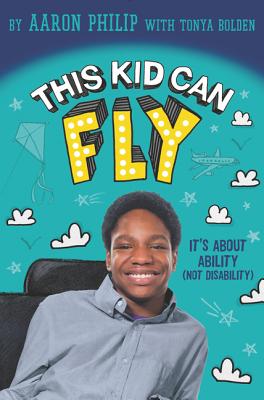
The War That Saved My Life
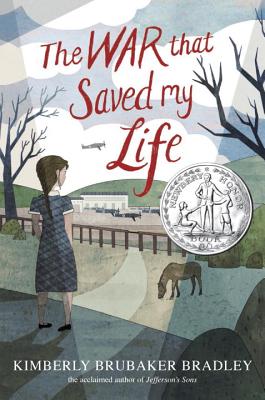 by Kimberly Brubaker Bradley
by Kimberly Brubaker Bradley
Grade 4-7
Description
Ten-year-old Ada has never left her one-room apartment. Her mother is too humiliated by Ada’s twisted foot to let her outside. So when her little brother Jamie is shipped out of London to escape the war, Ada doesn’t waste a minute—she sneaks out to join him. So begins a new adventure for Ada, and for Susan Smith, the woman who is forced to take the two kids in. As Ada teaches herself to ride a pony, learns to read, and watches for German spies, she begins to trust Susan—and Susan begins to love Ada and Jamie. But in the end, will their bond be enough to hold them together through wartime? Or will Ada and her brother fall back into the cruel hands of their mother?
Discussion questions
- Describe Ada. Name three qualities that she shows throughout the book. What does Ada really want in life?
- What is a clubfoot? Why did Mam think Ada was “bad” because she was born with a clubfoot? How did meeting other people help Ada gain a different perspective on her disability?
- The title of the book seems like a paradox since we often associate war with loss of life. Discuss how this war saved Ada’s life.
- How did you feel at the end of the story? Which characters do you have empathy for? Who changed the most from the beginning to the end of this story?
- Describe Miss Smith. How does she empower both Ada and Jamie in different ways? How do Ada and Jamie help her?
- Do you like the ending? If you were the author, would you change the ending of the story?
Classroom activities
- On page 258, Ada says, “there was a Before Dunkirk version of me and an After Dunkirk version.” Have students consider: How did Ada change through the experience of the Dunkirk evacuation? Invite students to listen to audio and view primary source photographs. Have students explore the oral histories from the Dunkirk evacuation.
- Provide students with the following choices of writing prompts. Have them choose one and write an essay to explore the question, citing evidence from the text to support their thinking.
- As Ada felt cared for and understood by Miss Smith, how did Ada’s thoughts about who she was, her capabilities, and how she belonged in the world begin to change? How did she change physically? Emotionally?
- As Ada begins to see herself through the eyes of others who value her and treat her with respect, she at times feels like an imposter and experiences confusing feelings. At what points in the story does she truly believe in herself? When does she feel worthy? How do you know?
- How do our experiences, or lack of experiences, shape our identity or how we see ourselves? How do Ada and Jamie teach us this?
- Is Ada’s clubfoot to blame for her suffering? Are individuals to blame for her suffering? Is society to blame for her suffering?
- How do role models change the way we see ourselves and the way we see the world? Consider the moment when Ada and Susan look alike. Did Ada ever experience herself acting like Mam?
- There’s more to be told about Susan’s life and why she didn’t always feel that she belonged. Tell the untold story of Susan’s life as you imagine it might be.
- Why was it important for Ada to confront Mam about whether or not she truly wanted Ada and Jamie? How does the truth set her free? (p. 305)
- Why do you think Kimberly Brubaker Bradley decided to title the book The War That Saved My Life? In what ways did Susan save Ada’s and Jamie’s lives? How did Ada and Jamie save Susan’s life?

When Stars Are Scattered
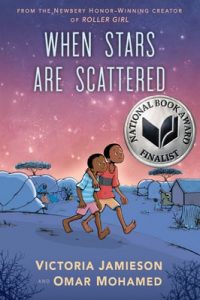 by Victoria Jamieson and Omar Mohamed
by Victoria Jamieson and Omar Mohamed
Grade 3-7
Description
Omar and his younger brother, Hassan, have spent most of their lives in Dadaab, a refugee camp in Kenya. Life is hard there: never enough food, achingly dull, and without access to the medical care Omar knows his nonverbal brother needs. So when Omar has the opportunity to go to school, he knows it might be a chance to change their future, but it would also mean leaving his brother, the only family member he has left, every day.
Heartbreak, hope, and gentle humor exist together in this graphic novel about a childhood spent waiting and a young man who is able to create a sense of family and home in the most difficult of settings. It’s an intimate, important, unforgettable look at the day-to-day life of a refugee, as told to New York Times bestselling author/artist Victoria Jamieson by Omar Mohamed, the Somali man who lived the story.
Discussion questions
- How did reading this book impact your thinking on refugees? Had you ever read a fiction or non-fiction book about life as a refugee before?
- Which person from the story do you relate to the most and why?
- What was the saddest part of the story for you? What was the happiest?
- Did you know this story was based on Omar’s real life experiences as you were reading it? How does this knowledge impact you and your experience of the book?
- Is going to school worth the sacrifices that Omar makes? Why or why not?
- Who are the helpers in Ifo camp? How do they help Omar? Who are the helpers in your community and how do they help? Are you a helper?
- Omar’s brother Hassan, like many kids in the camp, has very different opportunities in Dadaab than he does in America. Read the Author’s Note and discuss the ways in which Hassan’s life is different in America. Do you think things are better, worse, or about the same for him? Why? How about Omar?
Classroom activities
- Watch this video interview with the author and illustrator and discuss as a class afterwards.
- Examine a map of East Africa. Locate some of the places from the book: Mareerey, Somalia, and the Dadaab Refugee Camp in Kenya, then watch this video tour of the camp, and this video tour of the Ifo Market.
- Visit Refugee Strong to learn more about the non-profit that Omar started to help refugees in Dadaab.
- Listen to this Frontline Kid’s Special about life in the Dadaab Refugee Camp
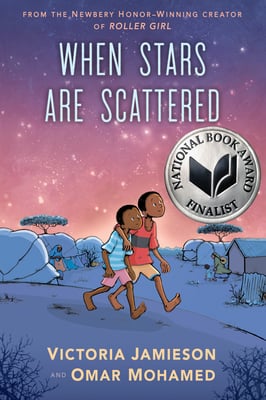
Wonder
Description
August Pullman was born with a facial difference that, up until now, has prevented him from going to a mainstream school. Starting 5th grade at Beecher Prep, he wants nothing more than to be treated as an ordinary kid—but his new classmates can’t get past Auggie’s extraordinary face. Wonder begins from Auggie’s point of view, but soon switches to include his classmates, his sister, her boyfriend, and others. These perspectives converge in a portrait of one community’s struggle with empathy, compassion, and acceptance.
Discussion questions
- Brown’s first precept was, “When given the choice between being right or being kind, choose kind.” Was there a difference between the way Summer was kind and the way Jack was kind to Auggie? Explain.
- Is exclusion a form of bullying—even if it does not involve physical harm to the person targeted?
- Much of Wonder deals with the rejection of people who look or seem different from ourselves. Spend some time discussing exclusion and inclusion in our society, particularly within school environments. Who gets included routinely? Who is excluded? How do you feel when you are included? How do you feel when you are excluded?
- At the end of the book, Mr. Tushman encourages the students from Auggie’s class to practice more kindness than they need to. Is this a good precept by which to live one’s life? Is it realistic? Why or why not?
Classroom activities
- Interview Auggie. In groups of 2 or 3, brainstorm questions to ask Auggie about his facial difference using words that are both kind and respectful. After they come up with a few questions, bring the class together to share and discuss their questions and how they think Auggie would answer them.
- Invite a guest speaker to your classroom to talk with students about their disability, and what students in your class can do to welcome those with differences and ensure that they feel like they belong.
- Research bullying and present on ideas to prevent bullying in your school and community. As a class or in small writing groups, do some research on the subject of bullying. Is it increasing? What forms does it take? How does social media impact bullying? What is being done to prevent bullying? What do your classmates and teachers think about the school’s climate around bullying, and what do they think would help decrease bullying? Using research and documented evidence, present your ideas to the class on bullying prevention ideas.
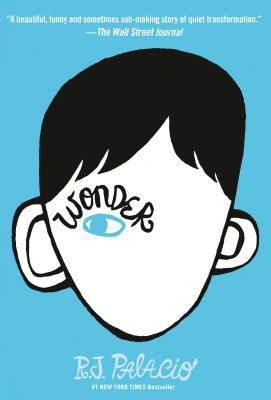
Suggested reading level: High school
Anger Is a Gift
Description
Moss Jeffries is many things: considerate student, devoted son, loyal friend and affectionate boyfriend, enthusiastic nerd. But sometimes Moss still wishes he could be someone else, someone without panic attacks, someone whose father was still alive, someone who hadn’t become a rallying point for a community because of one horrible night. And most of all, he wishes he didn’t feel so stuck.
Moss can’t even escape at school. He and his friends are subject to the lack of funds and crumbling infrastructure at West Oakland High as well as constant intimidation by the resource officer stationed in their halls. Something will have to change, but who will listen to a group of teens?
When tensions hit a fever pitch and tragedy strikes again, Moss must face a difficult choice: give in to fear and hate or realize that anger can actually be a gift.
Discussion questions
- Read the novel’s epigraphs—the quotations at the beginning of the book—as a class and then read short online biographies of James Baldwin and Dolores Huerta. Do you think the meanings of the quotes have changed from when they were first written? If yes, how have they changed?
- Reflect on the title of the book before and after reading it. Is anger a gift, and did reading the book change your perspective?
- Moss lives with anxiety and panic attacks and other effects from the trauma of his father’s violent death. He often feels ashamed about being emotional and wonders how best to navigate when and where he expresses himself. How does Moss cope with his fears and flashbacks? What strategies does he use? Do you think there is a stigma in talking about issues like depression and anxiety? If yes, why? How do you think that stigma could be erased?
- Rawiya tells the story of the day Principal Elliot ordered her to remove her hijab during the Pledge of Allegiance at a school assembly. What do you think about Rawiya’s response? How do Rawiya’s friends support her? How can schools and institutions improve their practices to make a more inclusive environment for all students?
- Shawna and Reg both have medical conditions and were injured by West Oakland High’s supposed attempts to keep them safe. Do you think Officer Hull’s presence at the school is more harmful or helpful? If you were the principal, how would you ensure the safety of Shawna and Reg?
- Moss’s high school includes school resource officers and metal detectors, while Esperanza’s school across town boasts college prep resources. How are these schools in the same city, yet so different? What social or public policies do these differences reflect? Have you seen these differences in your own communities?
- What did you think about the scene where Reg is forced to go through the metal detector? How would you have handled that situation if you were Reg, if you were his friend, if you were the officers or school staff?
Classroom activities
- If Anger Is a Gift had a soundtrack, which songs would you include? Working in groups, compile songs into a playlist and share the final list with the entire class.
- Moss’s school is seriously underfunded, although money is available to administer tests and install military-grade security equipment. Research how public schools, including charter schools, are funded in your community and state. Make charts to compare how the funding varies by district and how your state’s funding compares to that of the rest of the country.
- Working in groups, have students research the impact of policing brutality in the disability rights movement as well as other movements for social justice. As a class, discuss what you learned.
- In his author’s note, Mark Oshiro provides an extensive list of nonfiction books that taught him that “anger is indeed a gift, and that to wield that gift is an awesome experience.” He also includes a list of novels that inspired him. Choose one of the books from the author’s note, or you could also read the novel Mrs. Torrance assigned, Chinua Achebe’s Things Fall Apart, and check it out from a local library. After you have had time to read the selections, come together as a class to report on the book you chose. Share the most surprising, enraging, or profound things you learned.
- Watch this video and discuss the social vs. medical models of disability. Think about times in the novel where access was limited or denied for different characters, for example Reg at the coffee shop. Discuss what the characters did in those situations and what you would do in those situations.

Being Heumann: An Unrepentant Memoir of a Disability Rights Activist
Description
One of the most influential disability rights activists in US history tells her personal story of fighting for the right to receive an education, have a job, and just be human. From the streets of Brooklyn and San Francisco to inside the halls of Washington, Being Heumann recounts Judy Heumann’s lifelong battle to achieve respect, acceptance, and inclusion in society that wasn’t built for all of us.
Paralyzed from polio at eighteen months, Judy’s struggle for equality began early in life. From fighting to attend grade school after being described as a “fire hazard” to later winning a lawsuit against the New York City school system for denying her a teacher’s license because of her paralysis, Judy’s actions set a precedent that fundamentally improved rights for disabled people.
Candid, intimate, and irreverent, Judy Heumann’s memoir about resistance to exclusion invites readers to imagine and make real a world in which we all belong.
Discussion questions
- Judy Heumann writes that “Most things are possible when you assume problems can be solved.” What do you think of this statement? In what ways did this philosophy impact Judy’s life and work?
- There are many examples of intersectional organizing and coalition building in Judy’s memoir. Which groups supported and worked with disability rights activists in the memoir? Why do you think they supported the movement for disability rights?
- Protections provided by the ADA include people with addictions to drugs and alcohol and people living with AIDS. These protections were intentionally made part of the law and were very controversial. Reflect on why it was important to Judy and other activists to include everyone in the disability rights movement. Contrast this with the way the women’s movement largely neglected to include women with disabilities in their organizing. What do you think of these two approaches?
- Judy notes that press conferences began with instructions on language, outlining what is and isn’t appropriate language to use when talking or writing about individuals with disabilities. How might that have impacted the reporters and the news stories they wrote? Do you think language is important? Why?
- Judy states that meetings didn’t start without an interpreter and that they didn’t end until everyone had a chance to participate and contribute. How was their approach different from how you have personally experienced meetings, discussions, or other decision-making processes? What are the benefits and drawbacks of this approach?
- Judy writes that she never wished to not have a disability, and that from her perspective, all the barriers in her life came from outside her. What do you think of that statement?
- There were a number of calls to action at the end of the book. What were they? Which ones do you think you’d like to act on personally?
Classroom activities
- The kids in Judy’s neighborhood included her in their games by being creative problem solvers. Using this as an example, research the Social Model of Disability and think of ways your school and community could remove barriers and include everyone.
- Learn more about the state, federal, and international laws that affect individuals with disabilities. Choose one law to research individually or in groups. It could be one from the memoir or another of your choosing. Present your findings to the class.
- Identify one thing you would like to see changed in Minnesota regarding access and inclusion for individuals with disabilities. Research what laws may already be in place, identify what changes might be needed, and then write to your state representatives about your idea.
- Watch the documentary “Crip Camp” as a class and discuss the film. Download educational guides and guides for parents.
- Judy discusses representation, specifically in film, in her book. Watch this short PSA on representation and have students work independently or in groups to research films or TV shows with characters who have disabilities. Then have a class discussion on the ways those characters are portrayed, how many characters with disabilities are played by actors with disabilities, etc.
- At the time of publication, the United States had yet to ratify the United Nation’s Convention on the Rights of Persons with Disabilities (CRPD). Research the status of the CRPD in the US, then come up with one thing you can do as a class to urge ratification.
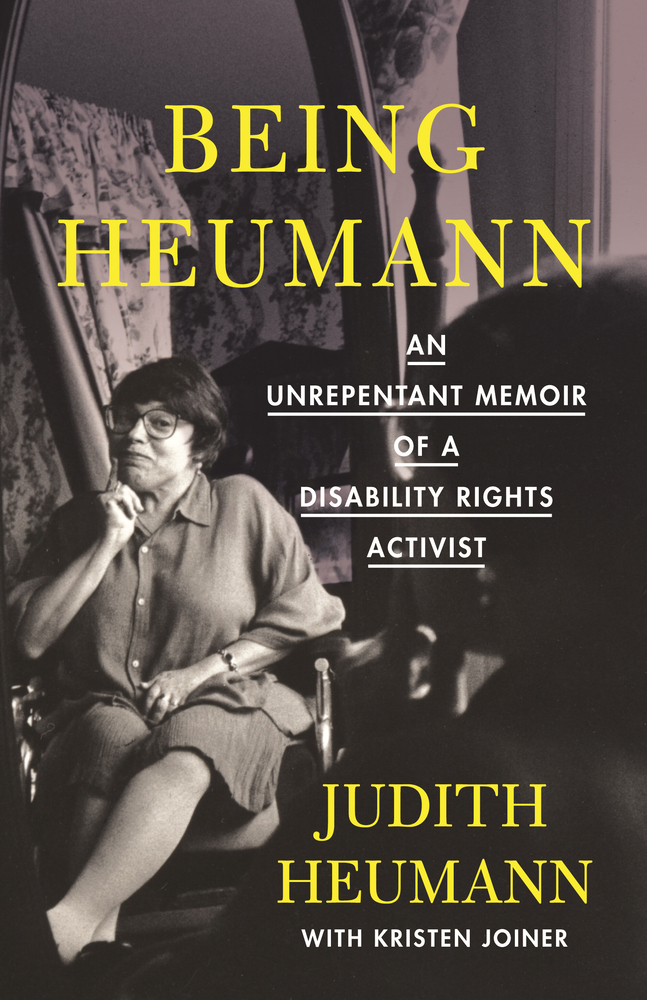
The Curious Incident of the Dog in the Night-Time
Description
Christopher John Francis Boone knows all the countries of the world and their capitals and every prime number up to 7,057. He relates well to animals but has no understanding of human emotions. He cannot stand to be touched. And he detests the color yellow.
This improbable story of Christopher’s quest to investigate the suspicious death of a neighborhood dog makes for one of the most captivating, unusual, and widely heralded novels in recent years.
Discussion questions
- One of the unusual aspects of the novel is its inclusion of many maps and diagrams. How effective are these in helping the reader see the world through Christopher’s eyes?
- Christopher’s conversations with Siobhan, his teacher at school, are possibly his most meaningful communications with another person. What are these conversations like, and how do they compare with his conversations with his father and his mother?
- Christopher’s parents—with their affairs, their arguments and their passionate rages—are clearly in the grip of emotions they themselves can’t fully understand or control. How, in juxtaposition to Christopher’s incomprehension of the passions that drive other people, is his family situation particularly ironic?
- What is unique about the way Christopher views the world? How it is similar or different to the ways you view the world?
- What is the effect of reading the letters Christopher’s mother wrote to him? Was his mother justified in leaving? Does Christopher comprehend her apology and her attempt to explain herself (p. 106–10)? Does he have strong feelings about the loss of his mother? Which of his parents is better suited to taking care of him?
- When Christopher’s father tells him who killed Wellington, how does Christopher react? Do you agree with how he feels?
Classroom activities
- Listen to this interview with author Mark Haddon.
- Discuss the paradoxes present in the novel that Haddon discusses. What other paradoxes did you notice and what do you think of them?
- Mark Haddon discusses the reasons why he chose to portray character of Christopher he way he did. Research the broad range of responses to the character and his portrayal. What do you think about his choices?
- Watch this video on the adaptation of the novel as a play.
- The creators state that the novel is not about disability, but about difference. What do you think about that statement? How might that framework inform their artistic decisions?
- Autism consultant Robyn Steward discusses creativity and the difference between social imagination and creative imagination in the video. What do you think about her insights?
- Christopher explains to the readers early on that one of the hard things of his existence is that he can see (and remember) everything he witnesses. Write a story of your own day in this style, seeing and reporting on all of the little facts you might otherwise miss or ignore. Include drawings and maps of the places and things you encounter!
- Christopher’s viewpoint is what drives the book—but what about the other characters? What do they think and feel about all of the events? Pick one of the characters from the novel—Mr. Shears, Mrs. Shears, Mrs. Alexander, or Christopher’s teacher Siobhan—and narrate the events of the book from their perspective.

Dear Rachel Maddow
Description
In Adrienne Kisner’s Dear Rachel Maddow, a high school girl deals with school politics and life after her brother’s death by drafting emails to MSNBC host Rachel Maddow in this funny and heartfelt young adult debut.
Discussion questions
- How is Lacy’s character different from other characters with disabilities you’ve read about in other books?
- One major theme presented throughout the book is representation. Where do you see this theme in the book? Provide two examples from the book.
- Why does Brynn want someone else to run for the committee seat?
- When thinking about student representation in your school, what groups/identities are not included in your school’s student government/leadership roles?
- Why does Lacy say she hates being seen as an inspiration? What did she mean by that?
- What does student leadership look like in your school? Why is student leadership important, and in what ways do you think your school could improve in this area?
Classroom activities
- Examine a team of representatives at your own school—such as the school board, student government, or any other positions that advocate for students—and as a class have an open discussion about groups and/or identities that are not being represented.
- Have a discussion about representation. Examine local, state or national officials that have been selected to represent a group of people. Have a discussion about what identities are represented and what identities are not and how this affects the people they are supposed to be representing.
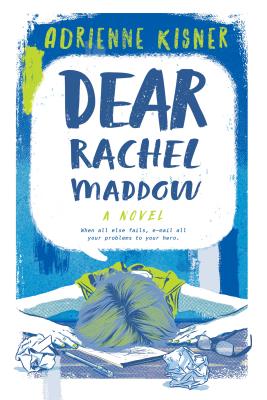
Fall Down 7 Times Get Up 8
Description
Naoki Higashida was only thirteen when he wrote The Reason I Jump, a revelatory account of autism from the inside by a nonverbal Japanese child, which became an international success. Now, in Fall Down 7 Times Get Up 8, he shares his thoughts and experiences as a young man living each day with severe autism. In short, powerful chapters, Higashida explores school memories, family relationships, the exhilaration of travel, and the difficulties of speech. He also allows readers to experience profound moments we take for granted, like the thought-steps necessary for him to register that it’s raining outside. Acutely aware of how strange his behavior can appear to others, he aims throughout to foster a better understanding of autism and to encourage society to see people with disabilities as people, not as problems.
Discussion questions
- What new insights have you gained by reading Naoki Higashida’s book? What surprised you most about his depiction of what it is like to be autistic?
- What messages from the author resonated with you the most? Did any of his advice or insight relate to your experiences? In what ways?
- Why do you think the author chose this title for the book?
- Read the author’s first book, The Reason I Jump: The Inner Voice of a Thirteen-Year-Old Boy with Autism, in addition to this one. Compare and contrast the two books. In what ways have the author’s perspectives changed? In what ways are they the same?
Classroom activities
- Naoki uses a number of devices to assist in communication. In groups or individually, research communication assistive technologies. Share what you have learned with the class and make a timeline of these technologies. Reflect as a group or individually on how these technologies have impacted communities, families, and individuals. Include your school community in your reflection.
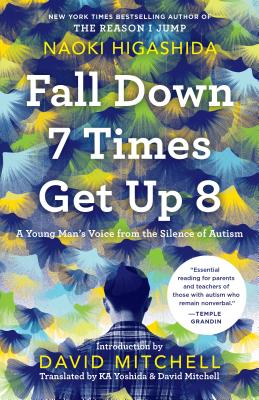
Flowers for Algernon
Description
Winner of both the Hugo and Nebula Awards, this powerful, classic story is about a man who receives an operation that turns him into a genius and introduces him to heartache.
Charlie Gordon is about to embark upon an unprecedented journey. Born with a low IQ, he has been chosen as the perfect subject for an experimental surgery that researchers hope will increase his intelligence, a procedure that has already been highly successful when tested on a lab mouse named Algernon. As the treatment takes effect, Charlie’s intelligence expands until it surpasses that of the doctors who engineered his metamorphosis. The experiment appears to be a scientific breakthrough of paramount importance, until Algernon suddenly deteriorates. Will the same happen to Charlie?
Before reading the book
Because Flowers for Algernon was published in the mid-20th century, it contains outdated language used to describe intellectual disabilities. A brief lesson on the story’s historical context and the evolution of disability terminology may be appropriate before starting the book.
Discussion questions
- Discuss the moral implications of Dr. Nemur’s experiment. What happens when humans manipulate the minds of others? This article provides additional content for consideration.
- Are the doctors who operate on Charlie acting in his best interests? Do you think Charlie would have gone through with the operation if he knew what the ultimate outcome would be?
- How has our understanding of intelligence evolved over time? How do we measure intelligence, and to what extent does intelligence determine quality of life?
- How has Charlie changed from the beginning of the novel? How did the surgery and later regression impact his quality of life and his relationships with friends and co-workers?
- Reflect on Charlie’s flashbacks to his childhood and life before meeting Nemur and Strauss. What do those remembrances suggest about the historical treatment of people with intellectual disabilities? How are things different or the same today?
- What does Algernon represent to Charlie? What are the parallels between their conditions?
- What did you think of the author’s choice to tell the story through progress notes from Charlie’s point of view? What did you think of the writing style and Keyes’ creative choices?
- What is the central message of the novel? Is there more than one moral to the story of Charlie’s treatment?
Classroom activities
- Watch the 2000 film adaptation of the novel, “Flowers for Algernon.” NOTE: There is also a 1968 film adaptation titled “Charly.” It contains some problematic and potentially triggering material. Teachers should review it in its entirety before deciding to show it in class. The PG rating is not accurate by today’s standards.
- In small groups, have students research the history of IQ testing and criticism of the tests. Students should share their findings with the class.
- Read this article and discuss as a class. How do the ideas behind these medical practices in Denmark connect with ideas present in Flowers for Algernon?
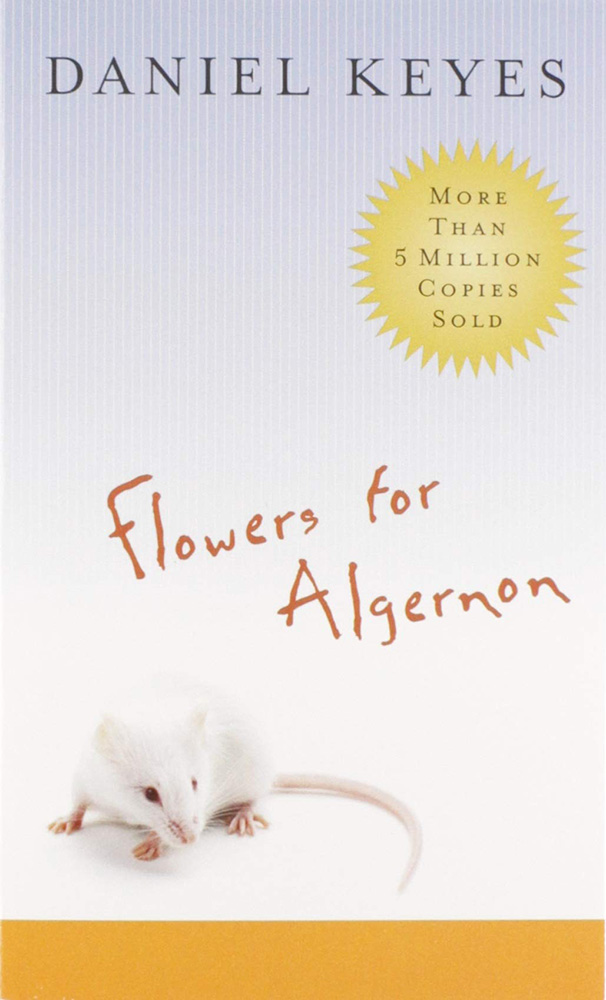
The Hill We Climb
Description
On January 20, 2021, Amanda Gorman became the sixth and youngest poet to deliver a poetry reading at a presidential inauguration. Taking the stage after the 46th president of the United States Joe Biden, Gorman captivated the nation and brought hope to viewers around the globe with her call for unity and healing.
Before or after reading the poem
- Learn more about poet Amanda Gorman, the First National Youth Poet Laureate, by watching this TedEd speech and this video about her story.
- In the interview, Gorman says poetry helped her to trust in the “power of your inner voice over that which people might hear through their ears.” What do you think she means by this?
- Gorman was diagnosed with an auditory processing disorder and learning disability in kindergarten. She speaks positively and openly about her disability, but often the media portrays disability differently. Read a few articles addressing this here and discuss the ideas presenting in these articles before or after reading the poem as a class.
Discussion questions
- What do you think is the central theme or message of the poem? Do you think Gorman is effective in getting her message across?
- Which lines are your favorite from the poem and why?
- What do you think Gorman means when she writes, “We’ve learned that quiet isn’t always peace”?
- Reflect on the lines and how they apply to movements for social justice including the disability rights movement:
“That even as we grieved, we grew,
That even as we hurt, we hoped,
That even as we tired, we tried.” - Gorman’s line “While we have our eyes on the future, history has its eyes on us” is perhaps a nod to one of her favorite artists, Lin Manuel Miranda. Listen to History Has Its Eyes on Me from “Hamilton,” then discuss whether you think Gorman was influenced by the song and how she may have transformed it into something new in her poem. What do you think she means by this line?
Classroom activities
- Watch this video of Gorman reciting her poem at the inauguration.
- Learn more about the National Youth Poet Laureate program and past winners here. Then individually or in small groups research poet laureates in your town and state. Share what you learned with the class.
- There are a number of performances by Gorman on YouTube. Individually or in groups, find your favorite video and share it with the class along with your impressions and reflections.
- Learn about poetry and write your own with classroom poetry activities here, here, and here, or create your own.
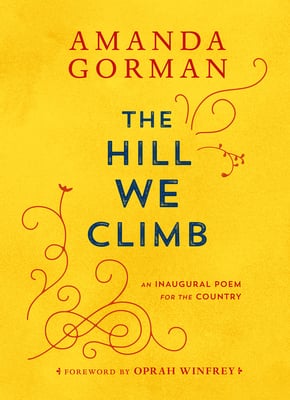
Indian Horse
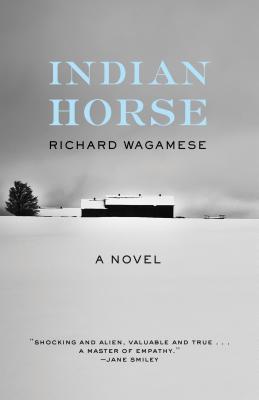 by Richard Wagamese
by Richard Wagamese
Grade 10-12
Description
Saul Indian Horse is a child when his family retreats into the woods. Among the lakes and the cedars, they attempt to reconnect with half-forgotten traditions and hide from the authorities who have been kidnapping Ojibway youth. But when winter approaches, Saul loses everything: his brother, his parents, his beloved grandmother—and then his home itself.
Alone in the world and placed in a horrific boarding school, Saul is surrounded by violence and cruelty. At the urging of a priest, he finds a tentative salvation in hockey. Rising at dawn to practice alone, Saul proves determined and undeniably gifted. His intuition and vision are unmatched. His speed is remarkable. Together they open doors for him: away from the school, into an all-Ojibway amateur circuit, and finally within grasp of a professional career. Yet as Saul’s victories mount, so do the indignities and the taunts, the racism and the hatred—the harshness of a world that will never welcome him, tied inexorably to the sport he loves.
Spare and compact yet undeniably rich, Indian Horse is at once a heartbreaking account of a dark chapter in our history and a moving coming-of-age story.
Discussion questions
- The story is told as a first person narrative. How did you react to Saul? Did your attitudes toward him change during the novel, and if so, what brought about those changes?
- The novel vividly describes the effects on Saul when he is sent to a residential school. How did reading the novel change your understanding of the residential school system and the lasting harm it has caused?
- Indian Horse illustrates some of the ways in which Canada has failed First Nations peoples. How does this compare to the United States? Can you think of any other examples of ways the US or Canada has failed First Nations peoples?
- Did you know that the ADA, the Americans with Disabilities Act, provides protections for individuals with PTSD? Did you know that it also covers alcoholism? Do you think Saul benefited from these protections when things become too much for him? Do you think the ADA was written with someone like Saul in mind? What supports and strengths does Saul have for healing from trauma he experienced, and what are the barriers or roadblocks to healing for him?
Classroom activities
- Watch the film adaptation of this novel. Discuss the adaptation. What was the same? What was different? How did your experience of the story change watching it vs. reading it?
- As a class, learn about Land Acknowledgements and create a statement for your school. Be creative. Here is an example from Northwestern.
- Plan to attend a cultural event in a local tribal community. Learn about the event and make sure that the event is open to the general public. Learn about expectations and customs around attending. Discuss what you observed, learned, and experienced afterwards.

Laughing at My Nightmare
Description
With acerbic wit and a hilarious voice, Shane Burcaw’s Laughing at My Nightmare describes the challenges he faces as a twenty-one-year-old with spinal muscular atrophy. From awkward handshakes to having a girlfriend and everything in between, Shane handles his situation with humor and a you-only-live-once perspective on life. While he does talk about everyday issues that are relatable to teens, he also offers an eye-opening perspective on what it is like to have a life threatening disease.
Discussion questions
- What are some of the themes of Laughing at My Nightmare?
- What things do you have in common with Shane?
- What are some of Shane’s strengths?
- How does Shane use humor to tell his story and educate others? What do you think about this approach? What part of the book did you find most humorous?
Classroom activities
- Watch this video about Shane’s life
- Read this article
- Check out Shane and Hannah’s blog about their life together in Minnesota
- Host Shane in your classroom for a virtual Q & A. Take some time to think about what you want to ask him. Learn about booking a Q&A session with Shane
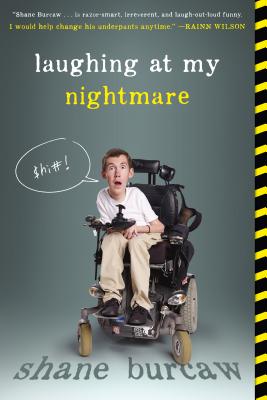
Lottery
Description
Perry L. Crandall knows what it’s like to be an outsider. With an IQ of 76, some see him as an easy mark. Before his grandmother died, she taught Perry many important lessons including the importance of words and writing things down—and how to play the lottery. Most importantly, she taught him who to trust, a crucial lesson for Perry when he wins the multimillion-dollar jackpot. As his dysfunctional and uncaring family descends, moving in on his fortune, he has a lesson for them: never, ever underestimate Perry Crandall.
Discussion questions
- At several points in the novel, various characters use the r-word. How do you feel about this word and other words people use to describe individuals with intellectual and physical disabilities? Why do you think the author chose to use this word? Do you agree with her choice? Why or why not?
- Perry calls Gram “a good teacher. She didn’t mind that I was slow, but lots of people do.” How did Gram’s lessons prepare Perry for the challenges he faces throughout the novel?
- Which character are you most drawn to? Why?
- What do you think of Perry’s decision at the end of the novel? What would you have advised him to do?
- Does money buy happiness? Does it buy love? What do you think Perry’s life would have been like if he hadn’t won the lottery?
Classroom activities
- Working in five groups, have each group read and discuss one of the five articles from the Star Tribune’s series A Matter of Dignity. Groups will then share what they learned with the class and reflect on how this relates to Perry’s experiences.
- Watch this TED Talk by Aimee Mullins. Reflect on the speaker’s message and how it connects with Perry’s story.
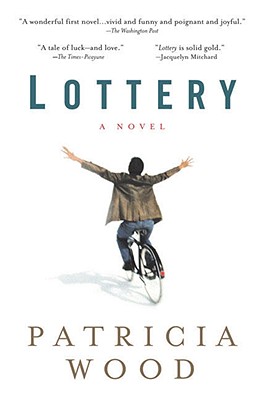
Marcelo in the Real World
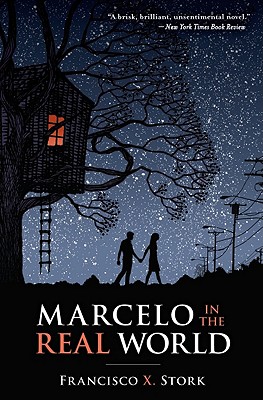 by Francisco X. Stork
by Francisco X. Stork
Grade 9-12
Description
“The term cognitive disorder implies there is something wrong with the way I think or the way I perceive reality. I perceive reality just fine. Sometimes I perceive more of reality than others.” Marcelo Sandoval hears music that nobody else can hear, part of an autism-like condition that no doctor has been able to identify. But his father has never fully believed in the music or Marcelo’s differences, and he challenges Marcelo to work in the mailroom of his law firm for the summer to join the “real world.”
There Marcelo meets Jasmine, his beautiful and surprising coworker, and Wendell, the son of another partner in the firm. He learns about competition and jealousy, anger and desire. But it’s a picture he finds in a file a picture of a girl with half a face that truly connects him with the real world: its suffering, its injustice, and what he can do to fight for what is right.
Discussion questions
- What is the difference between the “mental music” and the “real stuff”? How does Marcelo describe the mental music?
- Compare the conversations Marcelo has with his mother and the ones he has with his father. How are they different? Based on their conversations, how would you compare the relationship Marcelo has with his mother to the relationship he has with his father? Do you think this changes throughout the story? Why or why not?
- What are some of the rules of the real world that Marcelo finds difficult? Arturo tells Marcelo that the rules of the real world deal with the way to do things in order to be successful. Do you agree that to be successful you need to follow the rules of the real world? What are some of the rules of the real world that you believe are wrong? Do you agree with Arturo that the mailroom of the law firm is more “real” than Paterson?
- If you were to ask Marcelo at the end of the summer, “How do we live with all the suffering?” what do you think he would say to you?
- In the book, Marcelo’s diagnosis is never shared specifically. Why do you think the author might have chose to omit that detail?
Classroom activities
- Marcelo has many characteristics that are shared by some autistic individuals and individuals with Asperger’s. Visit the website for the Autism Society of Minnesota and the website for ANSWER, a Minnesota-based Asperger’s support network. Explore the sites, resources, and information independently or in groups and share one or two things you learned.
- Write and record short 2-minute video book reviews for Marcelo in the Real World. Share your review with the class. Some examples of different styles can be found here.

The Reason I Jump: The Inner Voice of a Thirteen-Year-Old Boy with Autism
Description
You’ve never read a book like The Reason I Jump. Written by Naoki Higashida, a very smart, very self-aware, and very charming thirteen-year-old boy with autism, it is a one-of-a-kind memoir that demonstrates how an autistic mind thinks, feels, perceives, and responds in ways few of us can imagine. Parents and family members who never thought they could get inside the head of their autistic loved one at last have a way to break through to the curious, subtle and complex life within.
Using an alphabet grid to painstakingly construct words, sentences, and thoughts that he is unable to speak out loud, Naoki answers even the most delicate questions that people want to know. Questions such as: “Why do people with autism talk so loudly and weirdly?” “Why do you line up your toy cars and blocks?” “Why don’t you make eye contact when you’re talking?” and “What’s the reason you jump?” (Naoki’s answer: “When I’m jumping, it’s as if my feelings are going upward to the sky.”) With disarming honesty and a generous heart, Naoki shares his unique point of view on not only autism but life itself. His insights—into the mystery of words, the wonders of laughter, and the elusiveness of memory—are so startling, so strange and so powerful that you will never look at the world the same way again.
Discussion questions
- What new insights have you gained by reading Naoki Higashida’s book? What surprised you most about his depiction of what it is like to be autistic?
- What messages from the author resonated with you the most? Did any of his advice or insight relate to your experiences? In what ways?
- What was the author’s relationship with nature, and how did that show up throughout the book?
Classroom activities
- Watch this production from the National Theatre of Scotland inspired by the book and have a classroom discussion about the project
- Naoki uses a number of devices to assist in communication. In groups or individually, research communication assistive technologies. Share what you learn with the class and make a timeline of these technologies. Reflect as a group or individually on how these technologies have impacted communities, families, and individuals. Include your school community in your reflection.
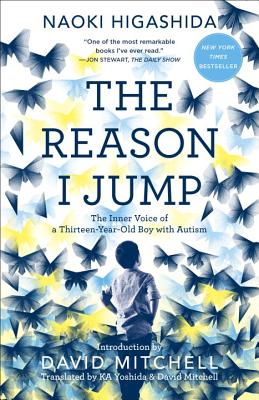
The Stars and the Blackness Between Them
Description
Told in two distinct and irresistible voices, Junauda Petrus’s bold and lyrical debut is the story of two black girls from very different backgrounds finding love and happiness in a world that seems determined to deny them both.
Port of Spain, Trinidad. Sixteen-year-old Audre is despondent, having just found out she’s going to be sent to live in America with her father because her strictly religious mother caught her with her secret girlfriend, the pastor’s daughter.
Minneapolis, USA. Sixteen-year-old Mabel is lying on her bed, staring at the ceiling and trying to figure out why she feels the way she feels—about her ex Terrell, about her girl Jada and that moment they had in the woods, and about the vague feeling of illness that’s plagued her all summer.
Mabel quickly falls hard for Audre when they meet and is determined to take care of her as she tries to navigate an American high school. But their romance takes a turn when test results reveal exactly why Mabel has been feeling low-key sick all summer, and suddenly it’s Audre who’s caring for Mabel as she faces a deeply uncertain future.
Discussion questions
- How did Mabel’s friends respond to her diagnosis and the progression of her illness? How did her family respond? In what ways did their responses respect and affirm Mabel’s wishes? In what ways did they struggle?
- Did you know the Americans with Disabilities Act (ADA) provides protections for individuals with diagnoses like Mabel? Why might that be important?
- In what ways does Queenie help Audre process the news of Mabel’s illness? How does she help Audre shift her ideas around what healing is? In what ways are the Dreamo parts of the story a part of healing? Why might Mabel go into those spaces instead of staying in her own reality?
- Why do you think Mabel and Afua connected? In what ways are their stories similar? In what ways are they different?
- What did you think about Mabel’s Make-a-Wish request? What would you have chosen in her situation?
Classroom activities
- Watch and reflect on this ED Talk by author Junauda Petrus. In what ways does the theme of youth having control and agency over their own bodies in the talk and in the book relate to the disability rights movement? Watch the movie Crip Camp as a reference point, or have students research the movement individually or in groups.
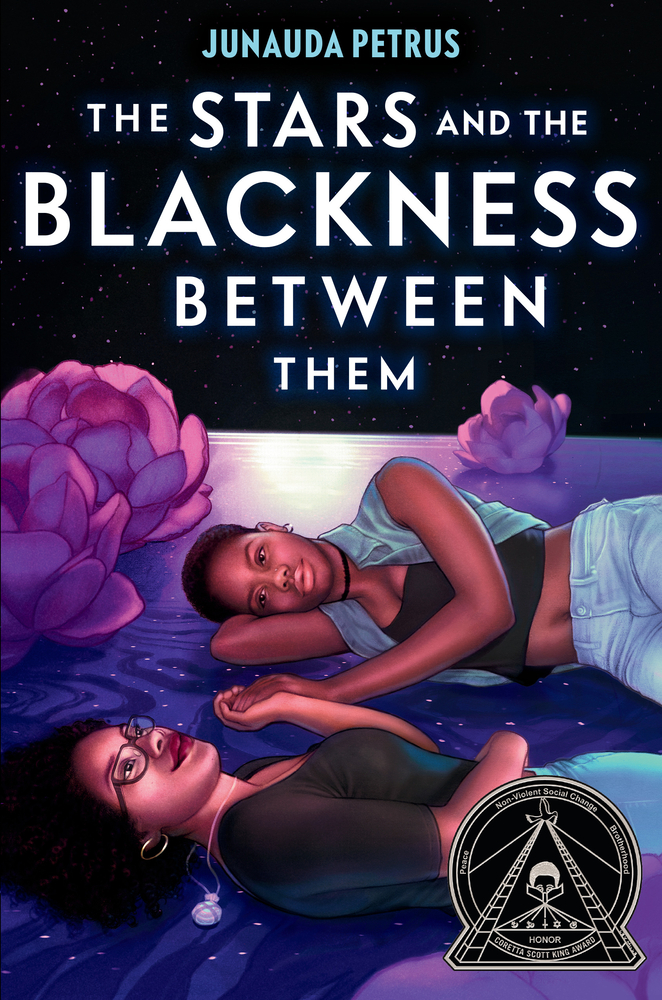
Unbroken: 13 Stories Starring Disabled Teens
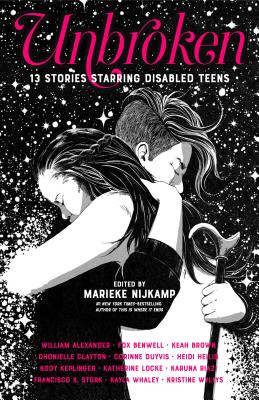 edited by Marieke Nijkamp
edited by Marieke Nijkamp
Grade 8-12
Description
This anthology explores disability in fictional tales told from the viewpoint of disabled characters, written by disabled creators. With stories in various genres about first loves, friendship, war, travel, and more, Unbroken will offer today’s teen readers a glimpse into the lives of disabled people in the past, present, and future. The contributing authors are award winners, bestsellers, and newcomers. Each author identifies as disabled along a physical, mental, or neuro-diverse axis—and their characters reflect this diversity.
Discussion questions
- What was your favorite short story? Why?
- Which character or characters did you most identify with, and why?
- Power, privilege, and bias are just a few of the themes that are examined throughout the anthology. How do these themes show up? What were other themes you noticed?
Classroom activities
- Listen to this podcast from Disability Visibility featuring an interview with the editor of this anthology Marieke Nijkamp.
- At the start of the podcast, interviewer and disability rights activist Alice Won says, “Diverse representation in literature is incredibly important for young adults in their formative years.” What do you think about this statement? There were many ways the anthology showcased diverse representation. Name ones that come to mind.
- Nijkamp prefers to refer to herself as disabled rather than a person with a disability. What do you know about Person-First Language and Identity-First Language? As a class, research and discuss the history and current debate around each of these models.
- Explore the author’s bios at the end of the book. Break into small groups, and have each group choose an author to further research.





